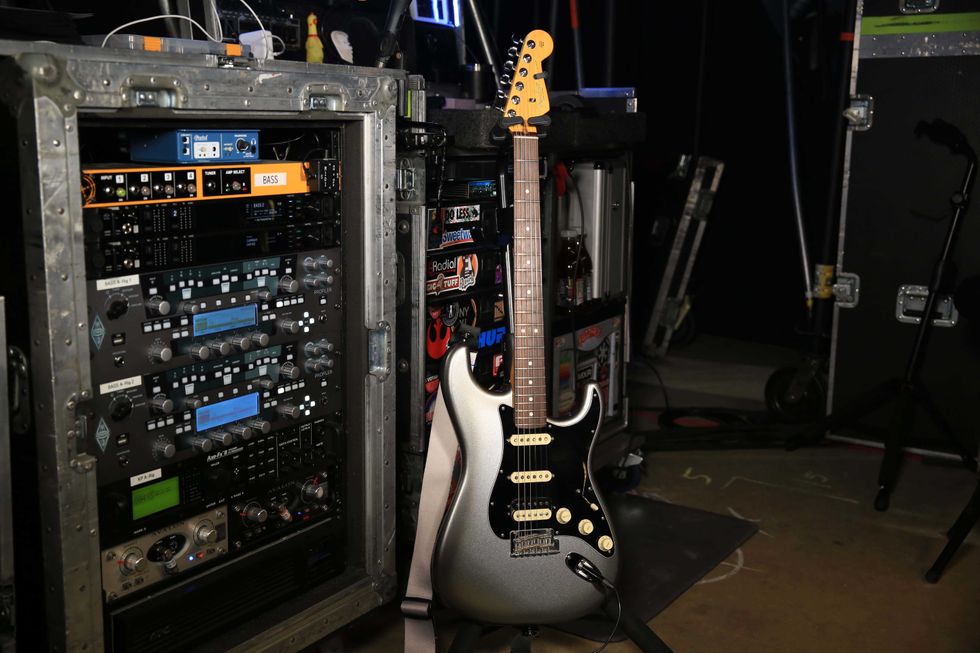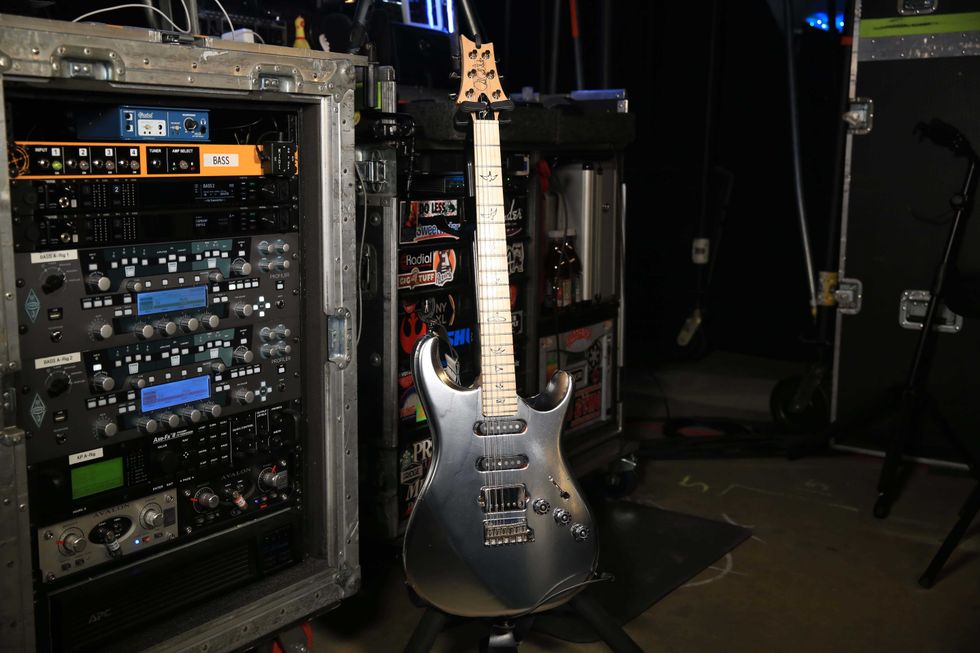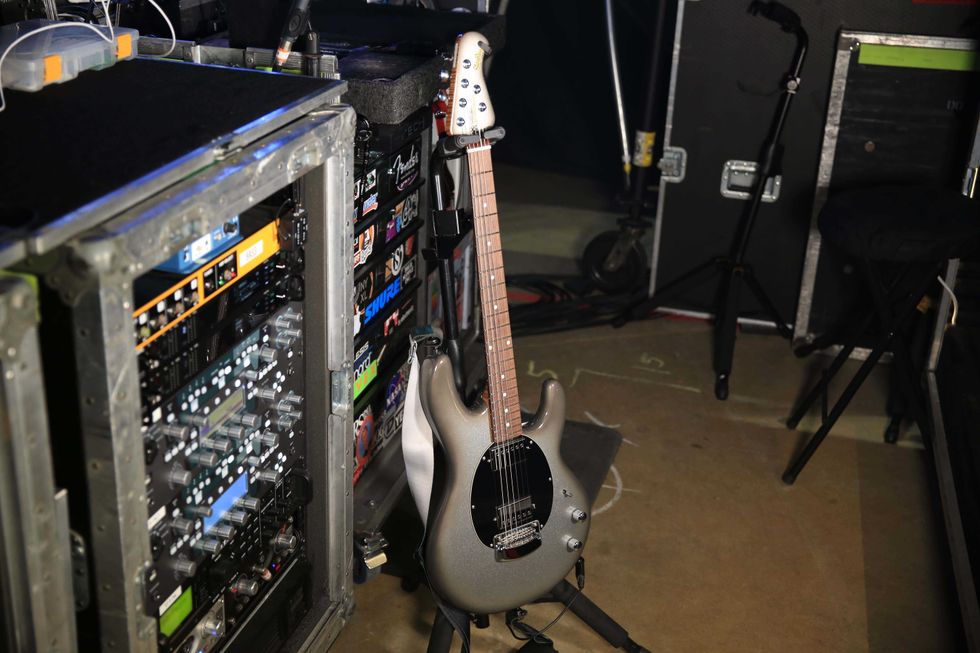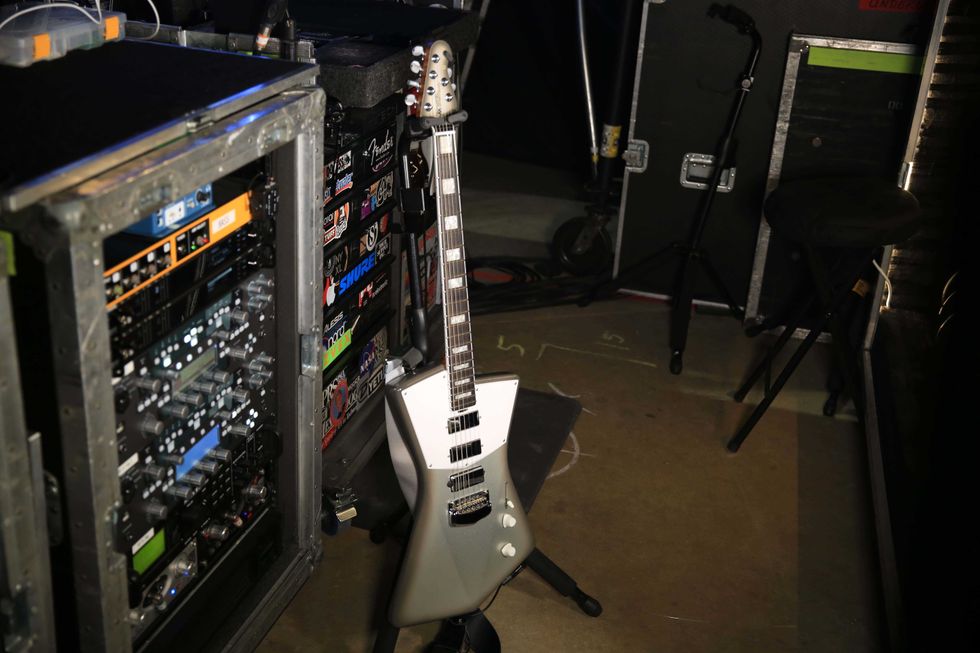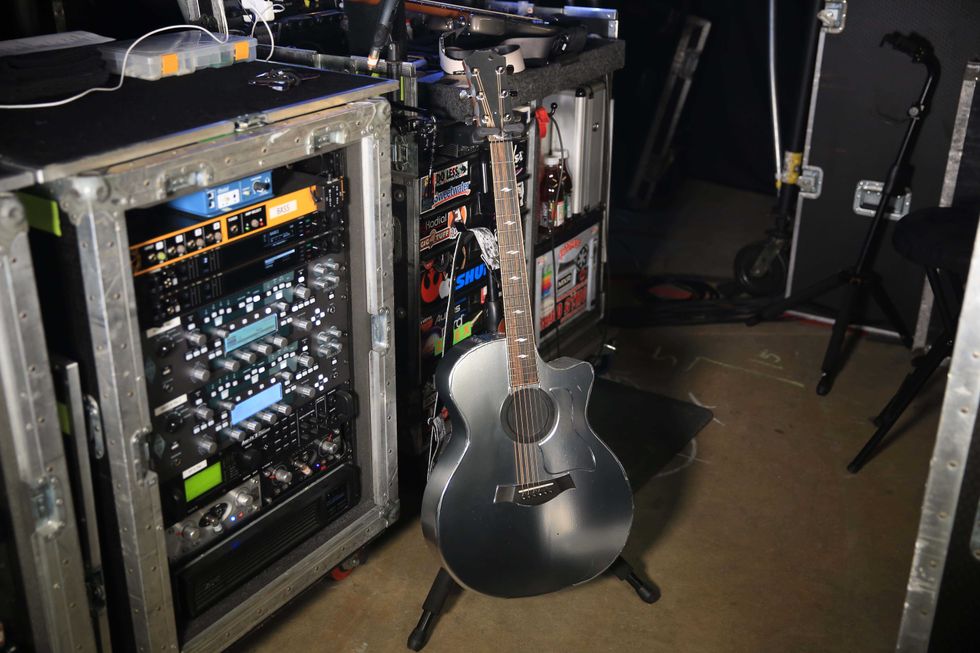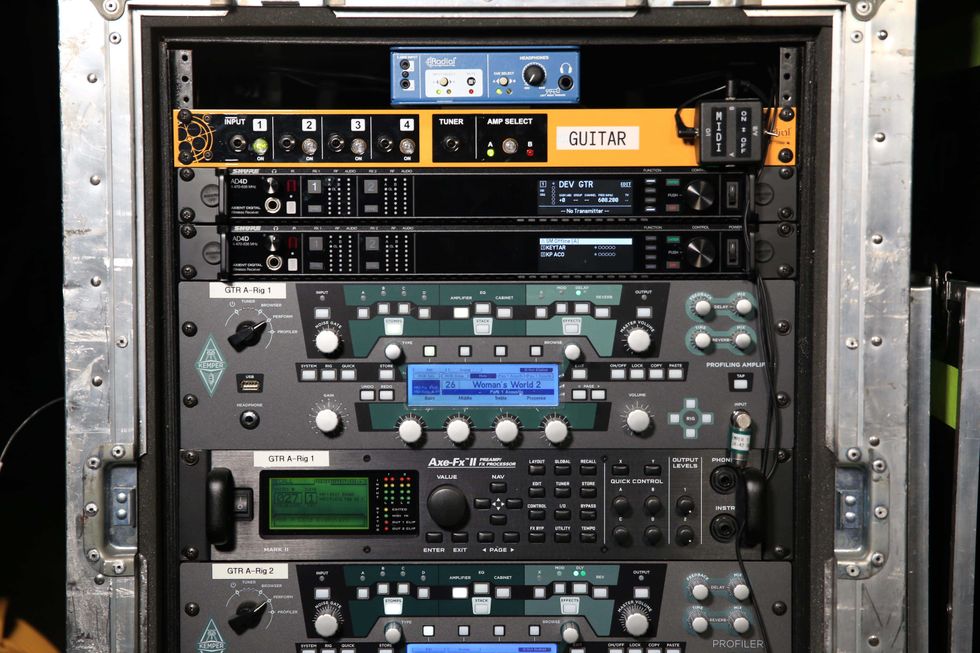“Stay out of the kitchen; call Chicken Magician,” chimes Hate Eternal’s Erik Rutan. He’s in the green room of the White Eagle Hall in Jersey City, New Jersey, as he reminisces about that catchy slogan from his last day job. Given that the guitarist/vocalist/producer hails from the town of Red Bank, less than an hour from the venue, it’s not surprising that he got a little nostalgic.
“The funniest thing about it is that I had, like, 50 Chicken Magician T-shirts at one point, because the owner insisted that I always wear one. Of course, I came to work and I never wore it, I never wore the hat, I didn’t want anything to do with it,” Rutan recalls. “He’d be like, ‘Where’s your hat and shirt? You’re not representing the company.’ I’d say, ‘Oh, it’s laundry day.’ He’d be like, ‘Don’t worry, I got two more for you.’ So, at some point, I had a ton of them, but when I moved to Florida, I got rid of them. Now it’s a regret. If I only had one of those Chicken Magician shirts.”
While the loss of his fried chicken emporium T-shirts might be a small regret, the trade-off proved to be enormous. He moved to the Sunshine State to record and tour with Morbid Angel, and that move shifted his career into extreme overdrive. Shortly after that, Rutan formed Hate Eternal in 1997, handling guitar and vocals for the band. Along the way he’s managed to play on three more Morbid Angel albums. But that’s just the tip of the iceberg. He is a seriously prolific dude!
Rutan, who studied production at N.Y.C.’s Institute of Audio Research, also made a huge splash in the production world after his work on Cannibal Corpse’s iconic 2006 album, Kill. Since then he’s become the producer of choice in the death metal world, shepherding three more Cannibal Corpse albums in addition to working on tons of recordings by genre leaders like Agnostic Front and Nile.
Hate Eternal’s latest, Upon Desolate Sands, is a perfect example of Rutan at his peak, as both producer and performer. The album features dynamics and classically inspired melodicism not often found in the death metal genre. Several songs are played way down from Rutan’s usual C# tuning (C#–F#–B–E–G#–C#) to drop G# (on 7-string), adding to the massive sound. In addition to the expected heaviness, Upon Desolate Sands features reflective pieces like “For Whom We Have Lost,” the instrumental that closes the album, which was written about two members of Rutan’s family who recently died.
Premier Guitar caught up with Rutan just hours before Hate Eternal hit the stage for a death metal mega-concert also featuring Cannibal Corpse and Harm’s Way. Amidst the chaotic backdrop of Cannibal Corpse’s soundcheck, Rutan discussed making Upon Desolate Sands, his classic metal influences, and his ability to shred with action so ridiculously high that it’s been dubbed “Mount Everest.”
Upon Desolate Sands is Hate Eternal’s seventh album. Has anything changed in your approach to writing for the band?
When I started Hate Eternal, I had this somewhat narrow-minded vision of creating this really extreme and aggressive sound. I’ve expanded that a bit, with more dynamics. That’s probably the only thing. I’ve always had a melodic side, as well. I grew up in a classical family. I was inspired by a lot of classical music.
in my music.”
Who played what?
My dad played cello, my sister and grandmother played classical piano, and I played violin as a child. I was so young that I didn’t take to it right away. As I got older, in my teens, I really grew to appreciate classical music: guys like Andrés Segovia and John Williams. When I first started playing guitar, it was guys like Eddie Van Halen, Randy Rhoads, Yngwie, and, of course, I loved Slayer and Metallica. James Hetfield was a big influence—from metal to thrash to wanting to create something a little bit more aggressive, which ended up becoming death metal.
Were passages like the harmony-guitars/bass-sans-drums ending in “Vengeance Striketh” and the intro to “For Whom We Have Lost” inspired by your classical background?
I don’t read or write music. I have a really good ear, which obviously lends itself to what I do as a producer. I definitely attribute a lot of my harmonization and counterpoint to classical music: listening to Beethoven, Bach, Mozart, and Vivaldi. Every weekend my dad would have me sit and listen to composition after composition. And also, like, Iron Maiden and Judas Priest—those two bands were the kings of harmony. Metallica, too. Those three bands, metal-wise, completely inspired me with harmonization-meets-classical—double tracking solos and quadruple tracking rhythms, or triple-tracking stuff, sometimes. A lot of that is from Randy Rhoads. I always heard he did that on Diary of a Madman and Blizzard of Ozz, which were some of my biggest guitar-influence records.
On the outro to “All Hope Destroyed,” you take a blistering solo over an interesting textural backdrop.
It’s funny, you know, sometimes things just happen spontaneously. I had this vision of one guitar ringing out more like setting a background, and then this other guitar is kind of going freestyle. I just had this idea of one guitar in the middle just going for it.
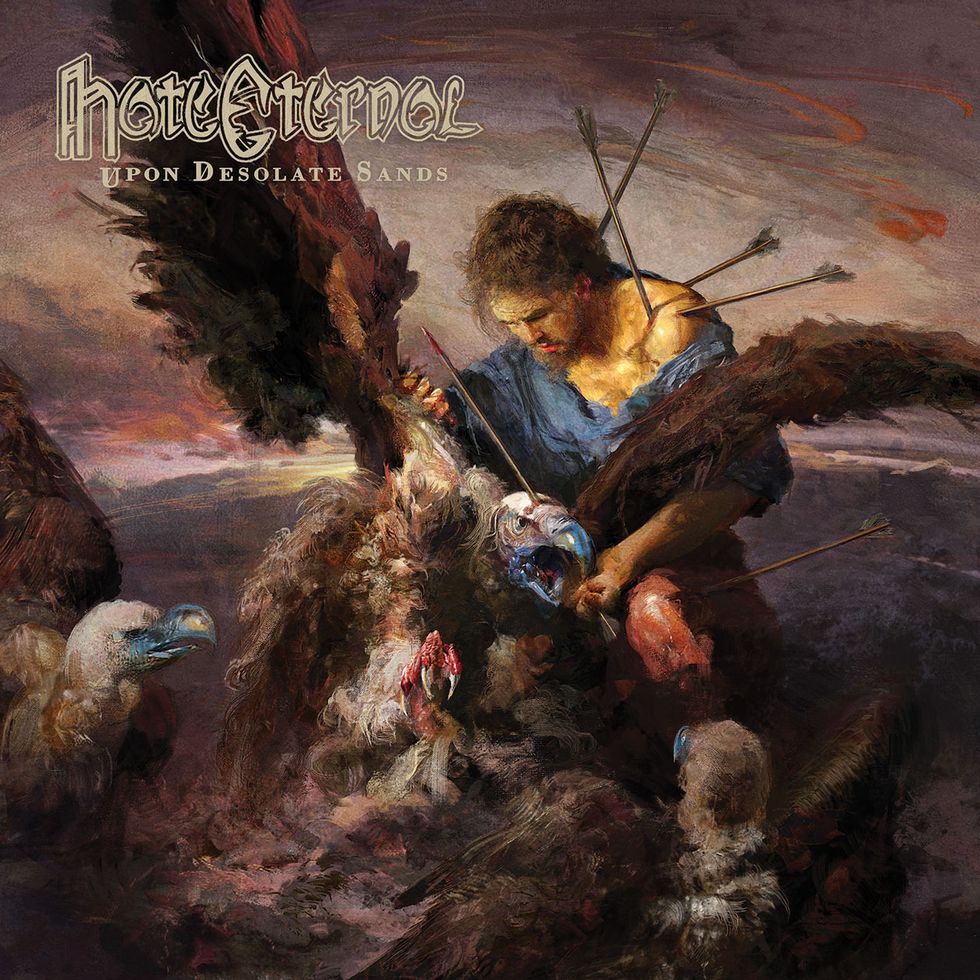
TIDBIT: Erik Rutan says he expanded the core sound of Hate Eternal on his trio’s new album by exploring more wide-ranging dynamics—something he learned to appreciate by listening to classical music.
How did you approach the mix to get that solo to stand out against the other parts that had a similar timbre and range?
Panning is always key. Throughout my career, my solo tone has always cut through, as well. I’ve always had a really nice solo tone. Part of it is just in the fingers, the hands, how I play. I like a cleaner tone. I like Marshalls.
You also have really high action on your guitars.
I do have high action.
How were you able to play so fast on things like the solo on the new album’s “All Hope Destroyed” with such high action?
I don’t know, man. It just started when I started learning guitar. I really focused on rhythm playing—consistency and being tight. It’s very rare to have high action and do a lot of soloing. It doesn’t really work. But for rhythm guitar, I play very percussively, and it sits well. For solos, I guess I just got used to high action. So many guitarists overlook the importance of rhythm, and James Hetfield was a big influence on me, because his rhythm hand was ridiculous. Like Master of Puppets. When I heard those records when I started playing guitar, all that tight rhythm playing inspired me. I focused on rhythm for a good year or two before I even started soloing, just so I could really get it tight. When it came to soloing, I worked on that, too, and I just got used to the higher action.
I do play extremely hard and my action is so high that techs call it “Mount Everest.” Even my luthier, Scooter Davis, of Granville Guitars, which resides in my studio—he sets up all my guitars, amps, and everything—is always amazed at how high my action is. It just feels comfortable and I love to get pure tone. I’ve lowered it a little bit over the years, because I was like, “This is ridiculous.”
It seems like your sound isn’t ultra high gain, but a lot of gain is later generated by the force of your attack.
It really is. That’s the thing with a lot of higher-gain amps that sometimes I miss. I have a studio, so I own 14 or 15 amps. I have 5150s and ENGLs. Right now, I use a Dual Rec with a JCM800 live, because I like that combination.
Rutan used a ’91 Ibanez Universe and a ’91 Gibson Explorer to track Hate Eternal’s new album. Morbid Angel’s Trey Azagthoth gave the Universe to Rutan for his birthday in 1993, and it’s still one of Rutan’s go-to guitars.
Photo by Alex Morgan
I saw on your Facebook feed that you recently got a new JCM800 and, after a long search, it was only the second one that actually got your stamp of approval. What are you looking for in an 800?
I’ve had seven or eight of them over my whole career. I’ve had 50-watters, different years. I’ve had modded 800s. But I have this one 800—it’s a ’97 reissue from Guitar Center, and they made 200 of them from original parts, from the factory in England. And it’s the one I’ve had for 15 years. I love it to death. It just might be a coincidence that it came from that year, but I compare everything to that amp. So when Scooter told me there was another one of those models online…. Well, it’s taken me 15 years to actually find another one for sale, so I bought it immediately. It does sound different from my baby at home, but now I can leave my baby at home, untarnished.
This 800 I found on Reverb—what I wanted to do was have an effects loop in there. Scooter put in a loop made by Metropoulos. I didn’t want to tarnish my original amp. I love it the way it is, and it’s been my studio mainstay for so many records—Hate Eternal and other records. Actually, I think we used that 800 for solos on the last Cannibal Corpse record. So this one, I wasn’t married to yet. We got [the loop] in and it didn’t really change the sound. It sounds awesome.
Was the mod invasive?
Uh, invasive enough in the sense they had to drill holes into the back. It’s not really going back to normal. It’s in—once you do it, you’re done! I was keeping my fingers crossed.
Do you run your Boss RV-3 through that effects loop?
I do, yeah. I’ve had tons of rack gear and rack effects, but one day I just said, “You know what, I think I’m going to go back to the basics and just use some pedals.” I got my Morley wah, I got my EQ and reverb, and the effects loop is so good in the Marshall. I used to have an EQ boost. I have my Maxon, my noise suppressor, my tuner, my Radial splitter into my 800 and Dual Rec, two different Marshall cabinets, one with Greenbacks and one with 75-watt Celestions.On the record, I used an 800 with a JMP for rhythm, an 800 for solos, and the Boogie and a Fender Twin reverb for extracurricular stuff, I like to call it—some cleaner and more atmospheric things.
It’s interesting that you prefer passive pickups to active ones.
Part of it is because of the dynamics of passive pickups. This leads to the same reason I love Marshalls. I love to be able to push it and back off it. I’ve gone through an array of different pickups. Right now I’m actually using Gibson Dirty Fingers in the bridge.
You were previously using Seymour Duncan Customs in the bridge?
I was, but I tracked the new album with my Ibanez Universe and my ’91 Gibson Explorer from the Morbid days. It just sounds ridiculous, with the mahogany body. It’s really one of my favorite guitars, rhythm-wise. The Gibson Dirty Fingers sound amazing there. For solos, I’ve been using the Bill Lawrence L-500s for a long, long time now. Dimebag used those back in the day, and his solo tone was legendary.
It sounds like you’re tuned down to G# on songs like “For Whom We Have Lost.” Is that the Ibanez Universe?
Yeah. That guitar has a real neat history. It was Trey [Azagthoth] from Morbid Angel’s guitar. He wrote Covenant with it, and he gave it to me for my birthday in ’93. He could see I’d bought a couple of Universes, and I needed one for touring. I wrote some songs for Domination on it, so I’ve toured with it for two records. It’s an original white Universe, and I think they only made 800, so it’s special.
For years, I’ve wanted to implement that tuning, but nothing came naturally to me. I don’t force anything, but for this record I just started messing with it. I was playing with it for, like, two months, but nothing was coming so I was thinking, “Maybe it’s not in the cards.” Then one day I was writing, and the next thing I knew, I wrote three songs with it: “For Whom We Have Lost,” “Nothingness of Being,” and “Upon Desolate Sands.” They added such a neat texture to the album, and live those songs have gone over so well.

Guitars
’91 Gibson Explorer with Gibson Dirty Fingers in bridge and Bill Lawrence L-500 in neck slot (C# tuning)
’91 Ibanez UV7PWH Universe with Gibson Dirty Fingers and Bill Lawrence L-500 (G# tuning)
Early 2000s B.C. Rich USA Custom Ironbird (C# tuning)
Amps
Marshall JCM800 ’97 reissue
Marshall JCM800 ’97 reissue modded with Metropoulos Zero Loss FX loop kit
Marshall ’79 JMP
Mesa/Boogie Dual Rectifier
Fender Twin Reverb
Marshall Classic Straight 4x12 (Celestion Greenbacks)
Marshall 1960 Straight 4x12 Cabinet (75-watt Celestions)
Effects
Maxon OD808
Maxon ST-9 Pro+ Super Tube distortion
Maxon OD-9 Pro+ Overdrive
Morley Steve Vai Bad Horsie wah
Boss NS-2 Noise Suppressor
Boss TU-2 Tuner
Radial splitter
Boss RV-3 Digital Reverb/Delay
Strings and Picks
D’Addario NYXL (.011–.056 and .011–.068)
Jazz III Black Tortex 1.35 mm
Do you get into a different headspace when you’re producing?
When I’m producing, I’m really narrow-minded. When I’m working on an album I’m not thinking about creativity, as a musician. My life stops at that point and I’m focused on the band I’m producing. You know, bands like Cannibal Corpse are very prepared. I'll throw out ideas and melodies but that doesn’t mean it always passes.
If someone doesn’t go for an idea that you really believe in, do you fight for it or just move on?
I'll fight for it. But by the same token, my whole focus on producing, really, is trying to bring out the authenticity of the band and the sound of the band. I really focus on trying to get the best performance I can, and that’s because I come from an older time. I grew up recording analog, and now we’re in a digital/analog world. So I’m always focused on trying to capture the most authentic tones and the best performances that I can get, and I push them to get that. But at the end of the day, I work for the band, first and foremost, and I want to make them happy. People ask sometimes, “Do you have a sound?” And I say, “My sound is bringing out the sound of the band.” I’ve been fortunate enough to work with everyone from Cannibal Corpse to Agnostic Front to Madball to Mountain Goats. So I’ve had variants of different styles of music. They’re all very unique, so I focus on bringing out their uniqueness.
You’ve spoken often about having a troubled childhood, yet you’ve been called the “nicest guy in death metal.” Does music help you deal with negative emotions?
My childhood was very challenging. I faced a lot of adversity to get where I’m at. Music really saved me in so many ways, because, before music, I was in trouble in every which way—whether it was with school, or altercations, or legal troubles, even, as a juvenile. When you grow up with an aggressive nature because of surroundings in your family and things … music gave me a way to express that. When I first started playing guitar, I just loved heavy aggressive music. Take all of this and put it into that. And it’s made me much happier. It’s been therapeutic, and not just with anger or rage, but sadness and grief. Like, “For Whom We Have Lost” was written about two massively important people in my life that passed away last year.
“For Whom We Have Lost” has no vocals. Did you feel that the music alone could express your sentiment better than words in that case?
It was all heart, all soul. The interesting thing about that song is the main solo passage that goes from beginning to the end, and even the solo in the middle of the song, was all done in one evening of grieving. It was my way of expressing that grief, and the solo is one take. I kept it and I didn’t even try to redo it. I first recorded it at home a few nights after one of these losses. The rest of the song came around another significant loss in my family. So it came at two different times and merged into one song, and has a lot of deep meaning to me.
It’s a powerful way to end the album.
It is. For me, music has always been the one way I could express myself when I didn’t know how. I wasn’t given the tools in my youth to express myself. Music also has helped me in my everyday life to become a healthier, more positive person by expressing all this negativity in my music. I’ve been doing this for 30 years, and a couple of years ago I had my first Guitar World feature, and it was so special. Just like to be in Premier Guitar. For me, it’s one of the most amazing accolades I could ever get as some kid that was 15 jamming to Black Sabbath.
I have pretty lofty goals. People would tell me, “You’re kidding yourself. Get a real job, you’re living a pipe dream.” But I never doubted myself. I just focused on the task at hand, and that was because of personal need to have something to grasp onto, to focus on, to get me out of the mire that I felt like I was totally submerged in. To be able to sing and play guitar in my own band, to record my own record, and this tour—touring with Cannibal Corpse, who I’ve produced four albums with, and to play with Hate Eternal, with our new record out…. This is one of the best times in my whole life. I’ve got a lot to smile about.
Captured live at the Senate in Columbia, South Carolina, on November 2, 2018, here’s the first show of Hate Eternal’s tour in support of Upon Desolate Sands. This full-length concert shows Erik Rutan in top form, armed with his trusty, red B.C. Rich Ironbird.


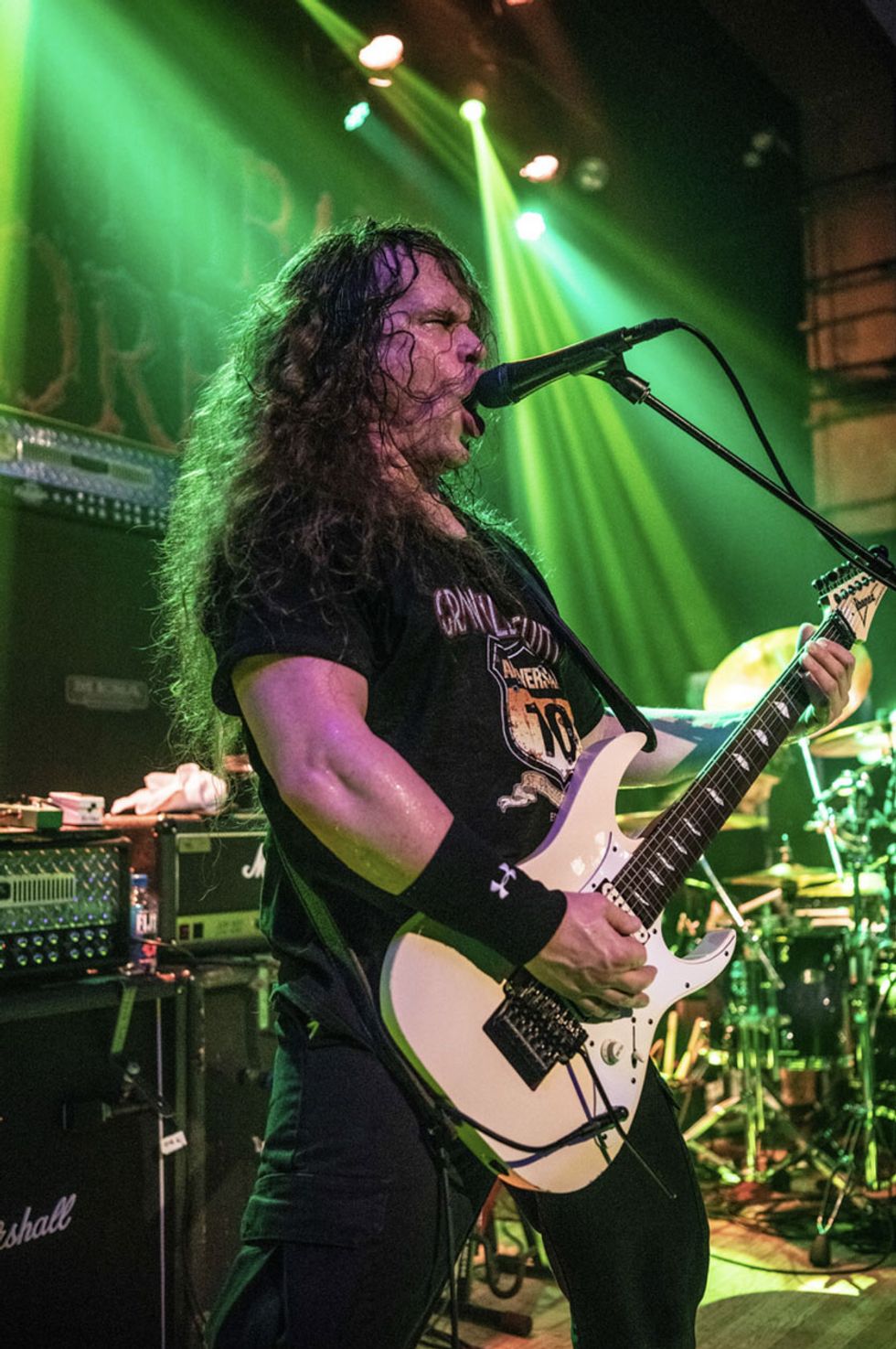
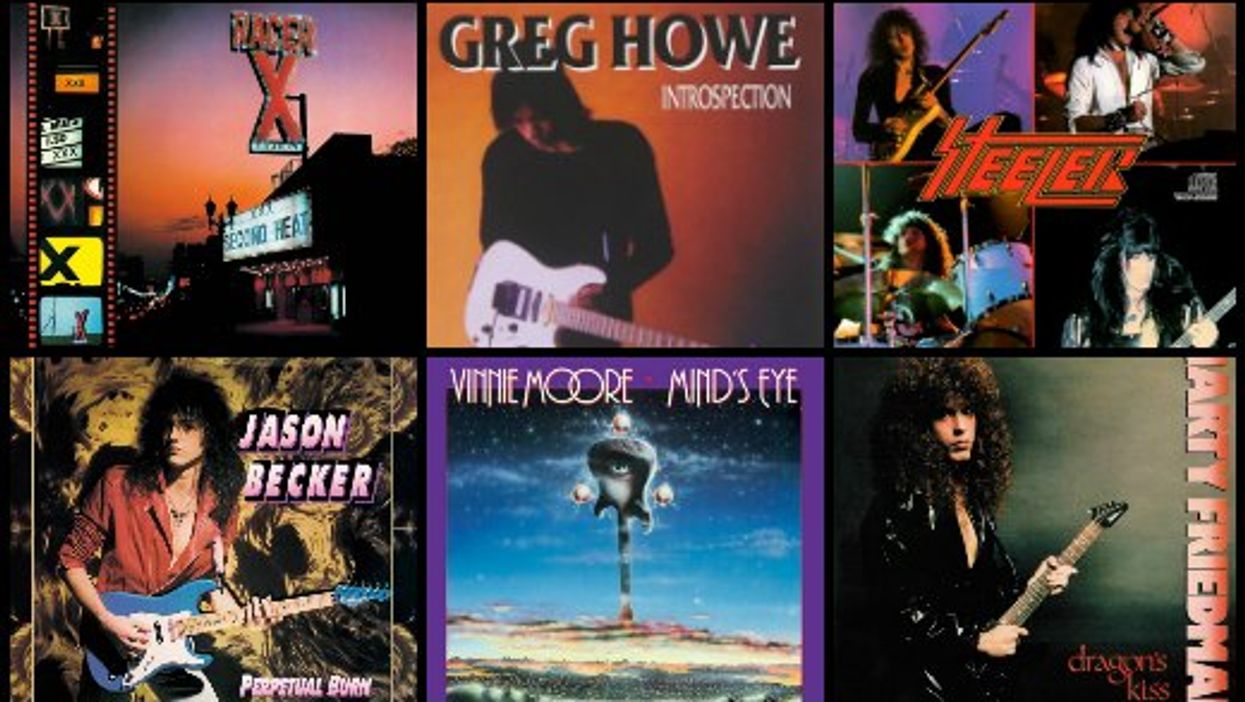
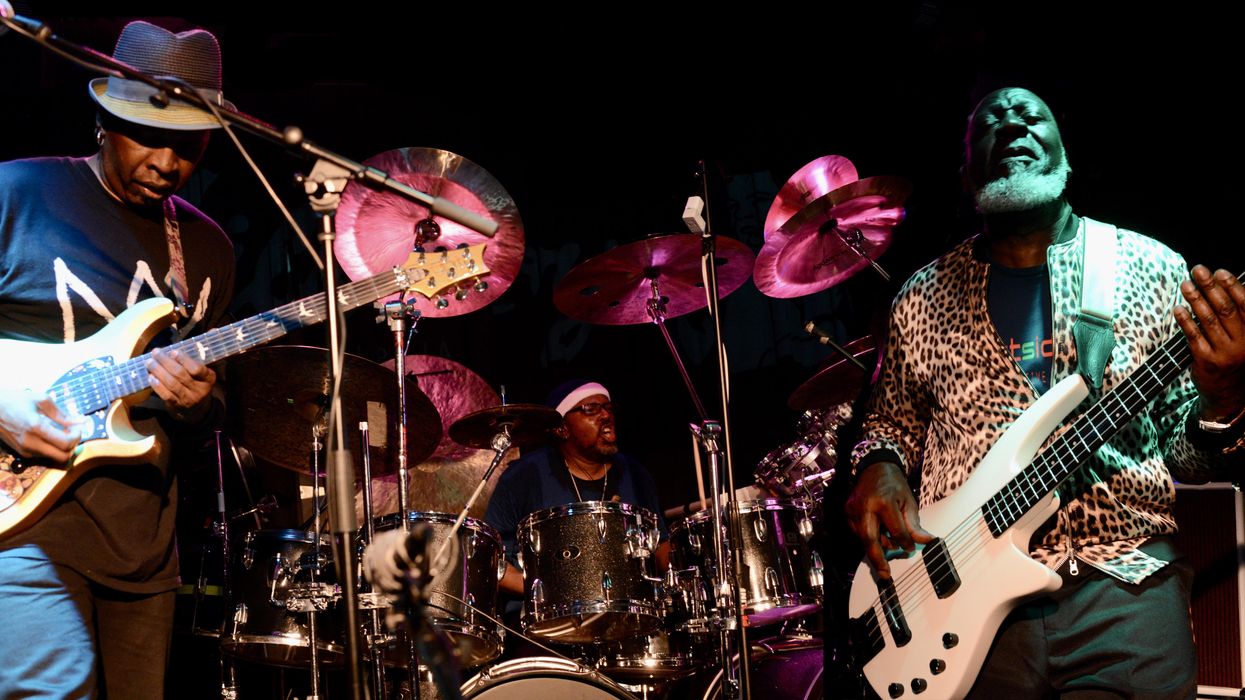


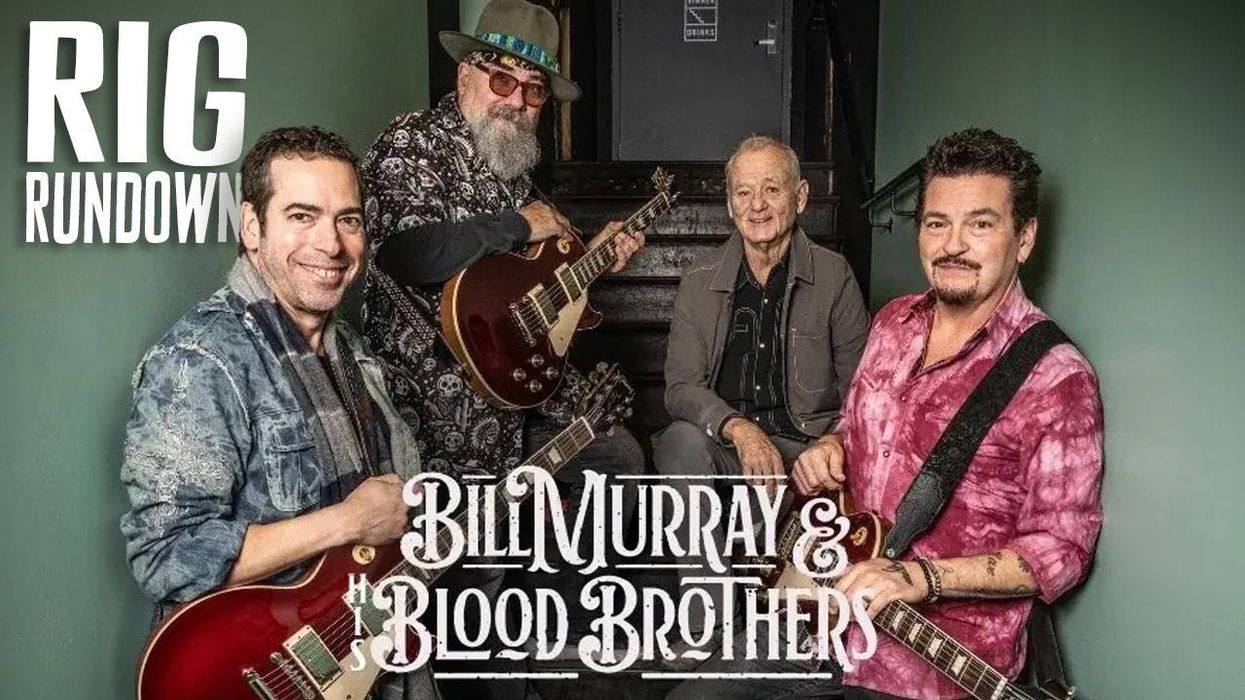
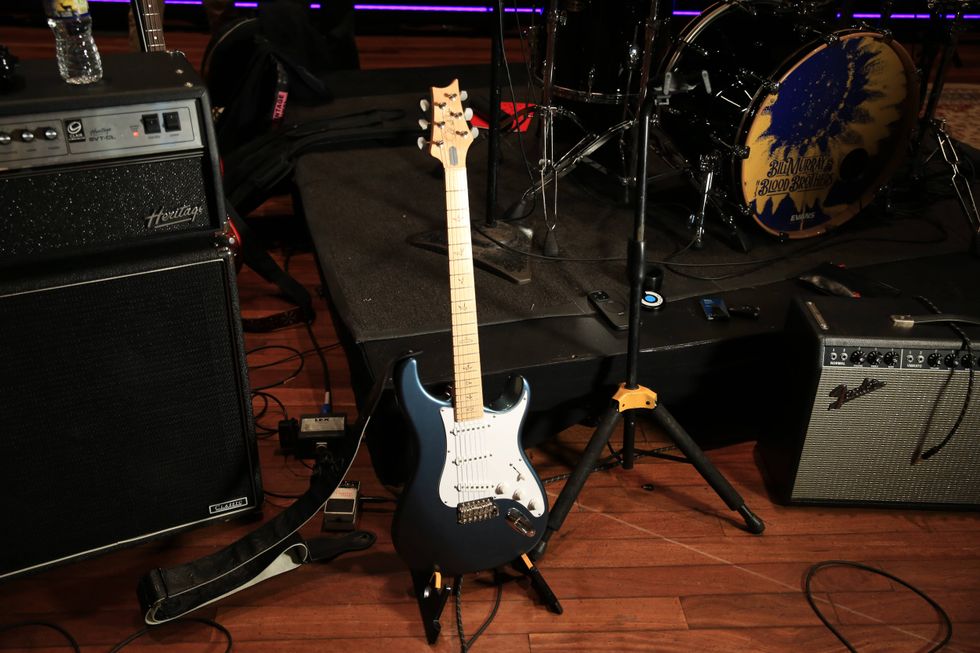
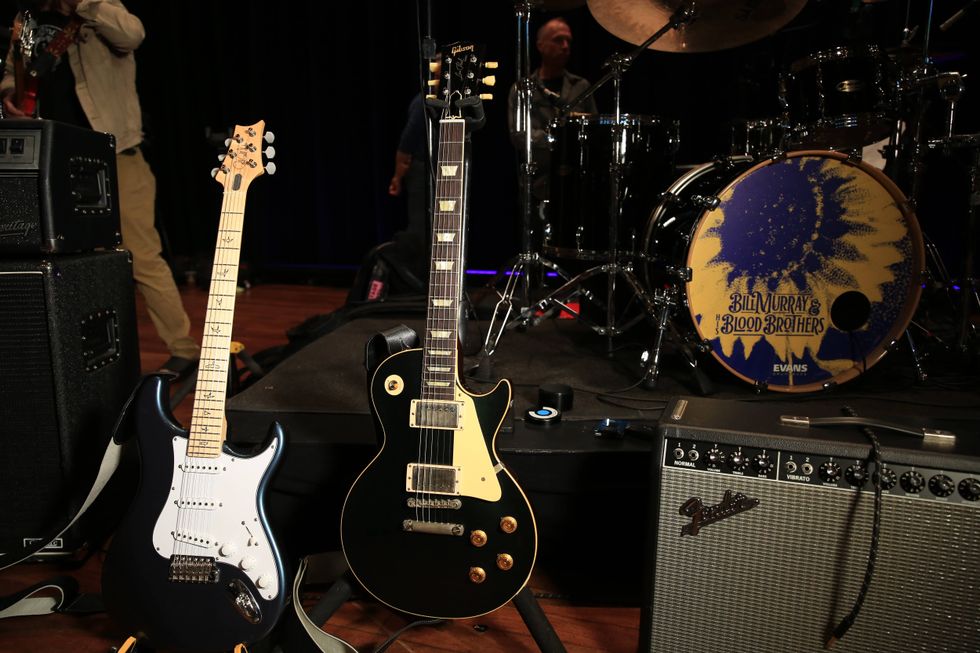
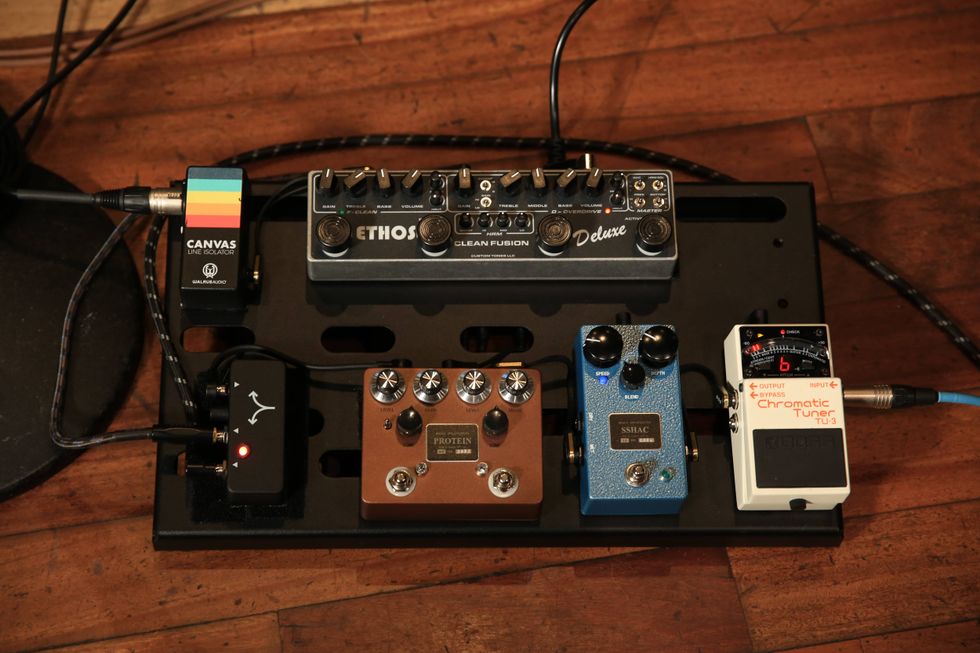
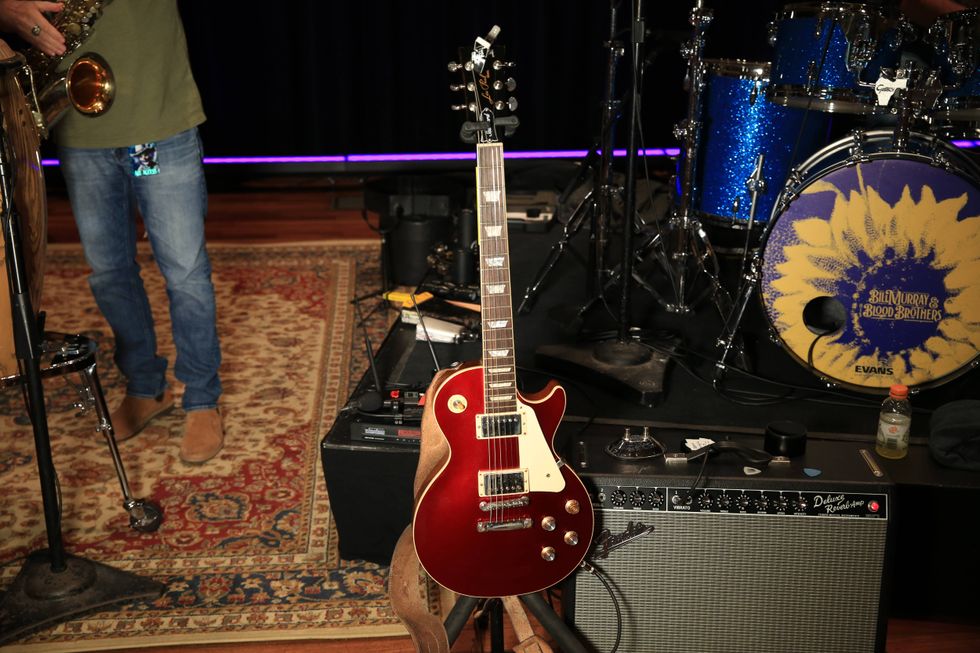
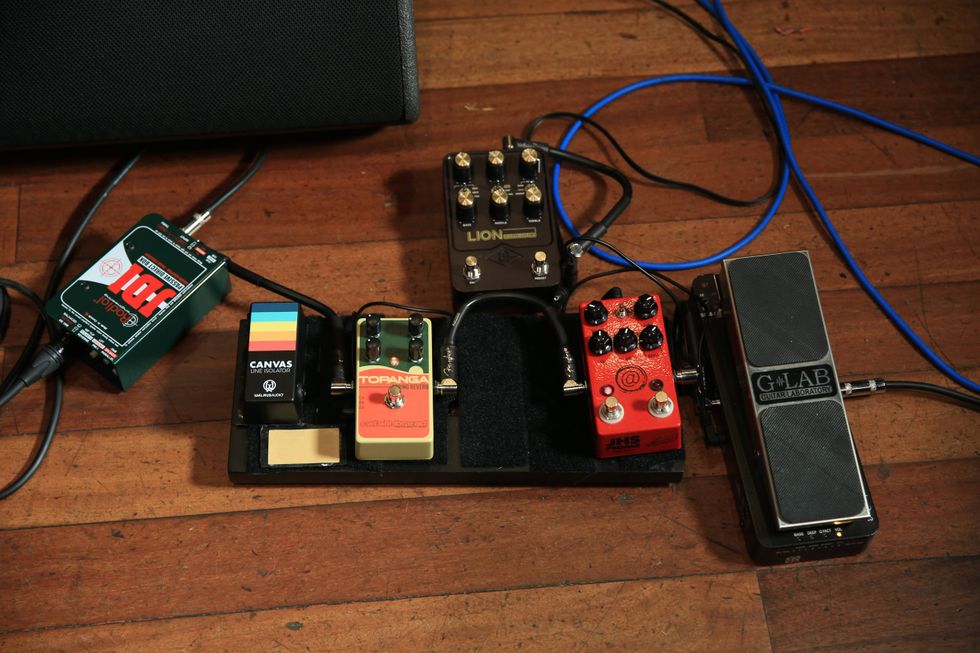
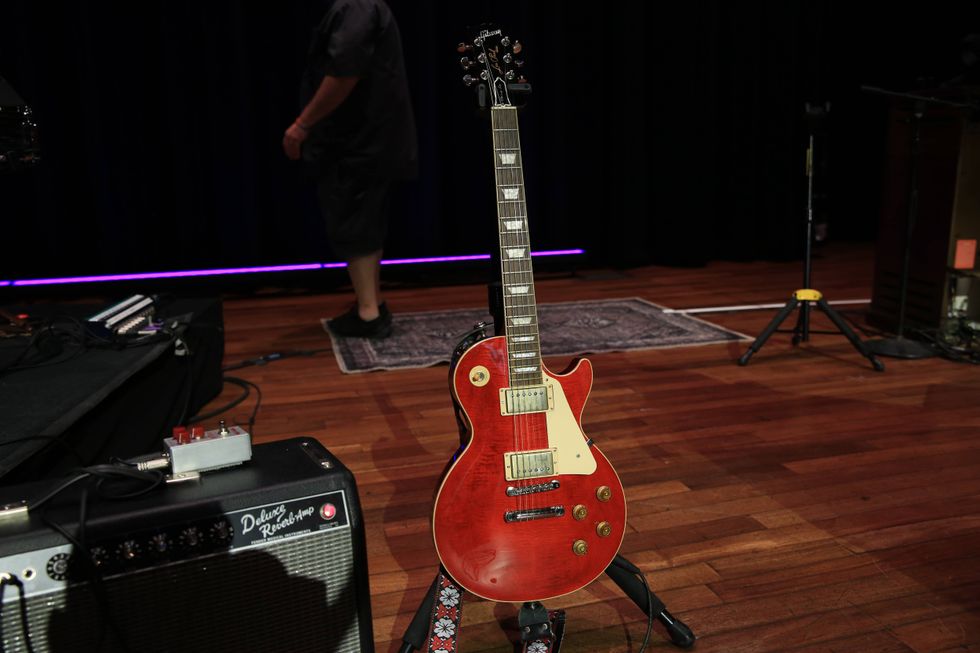
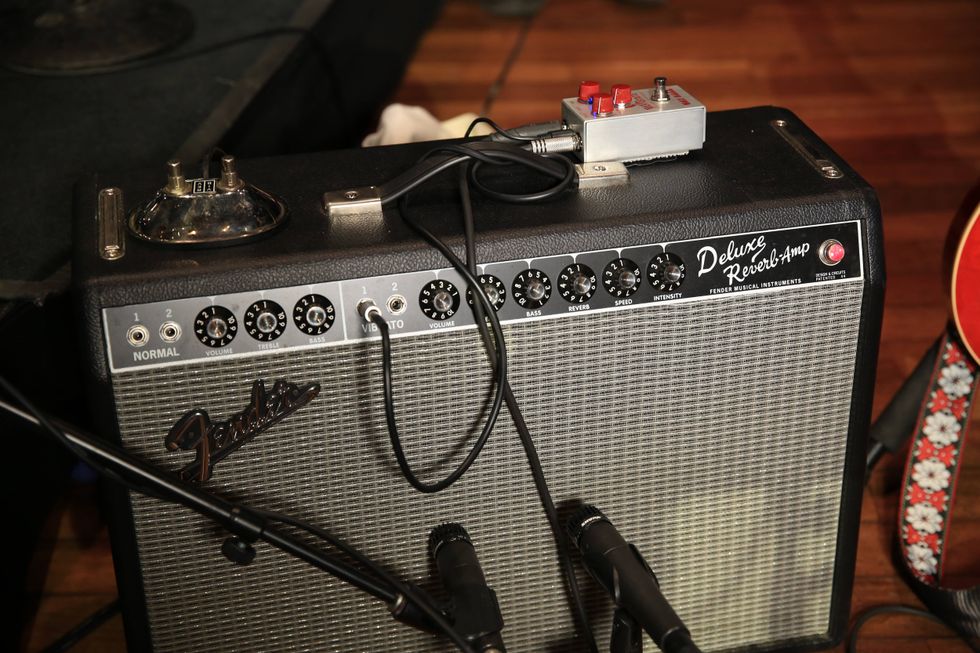
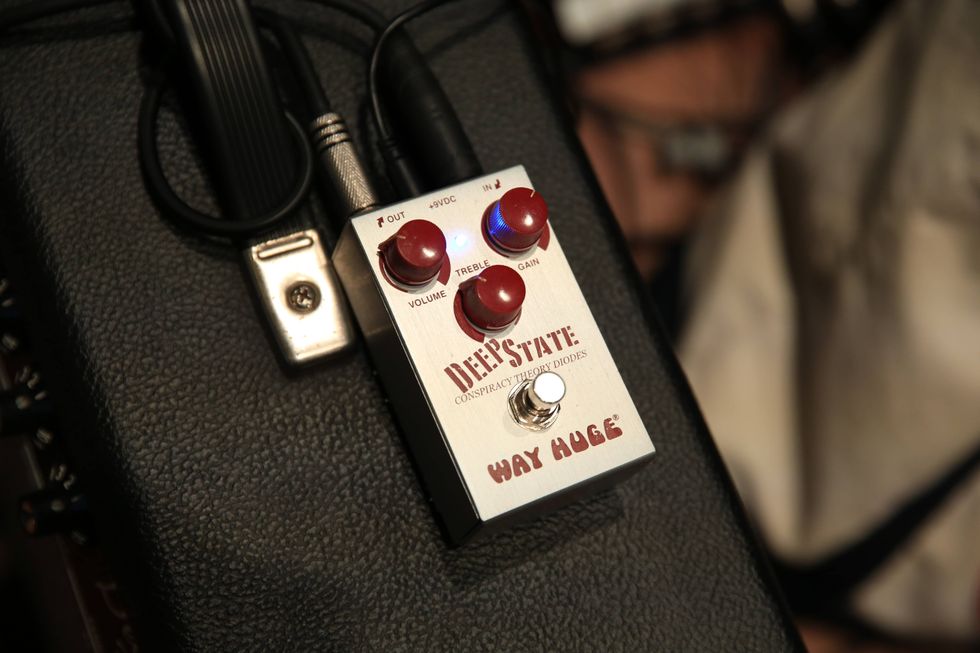

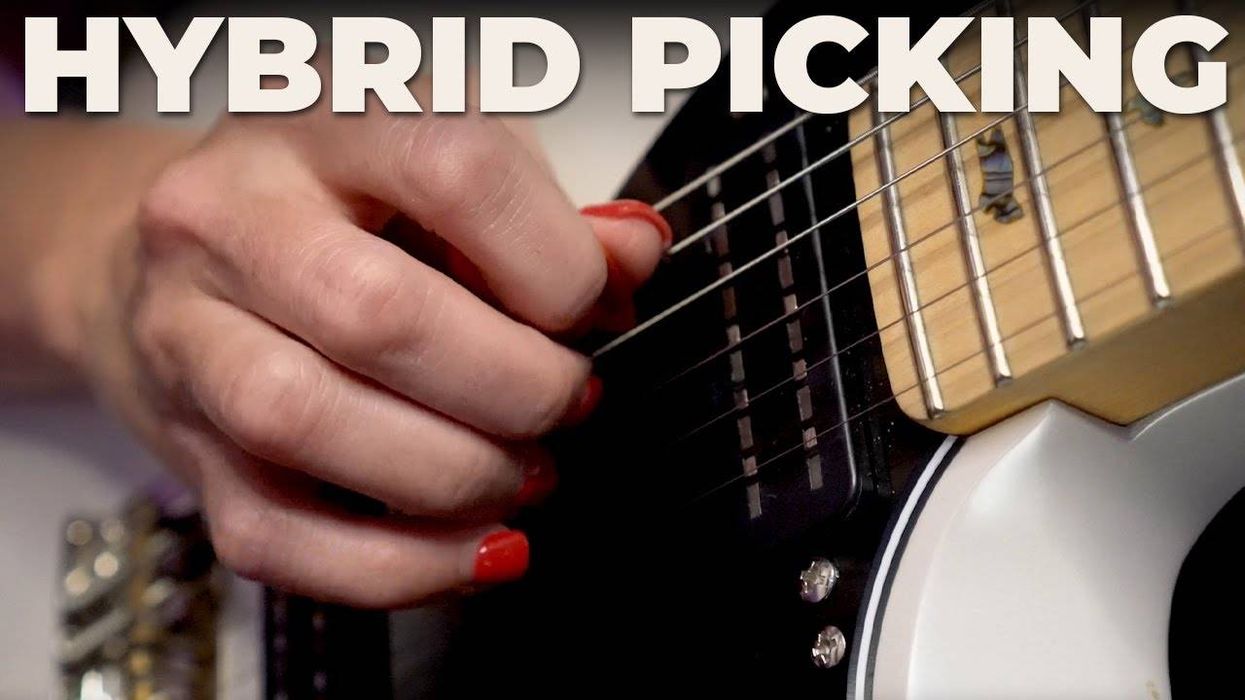
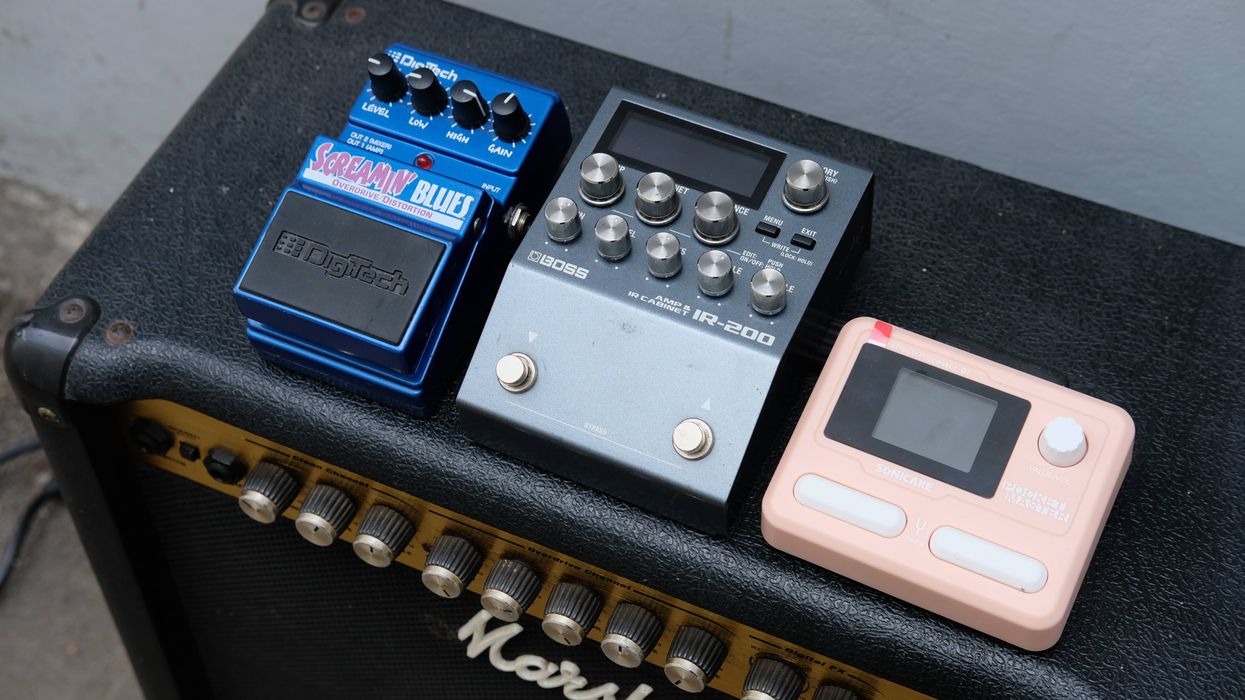
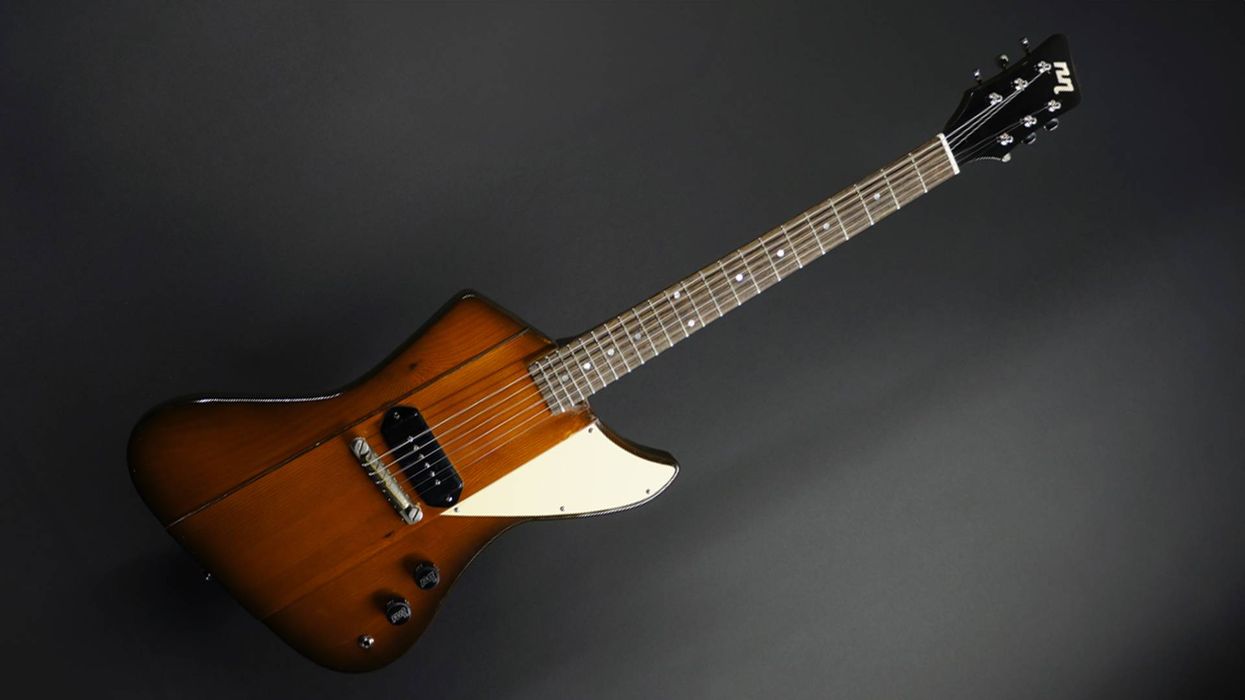
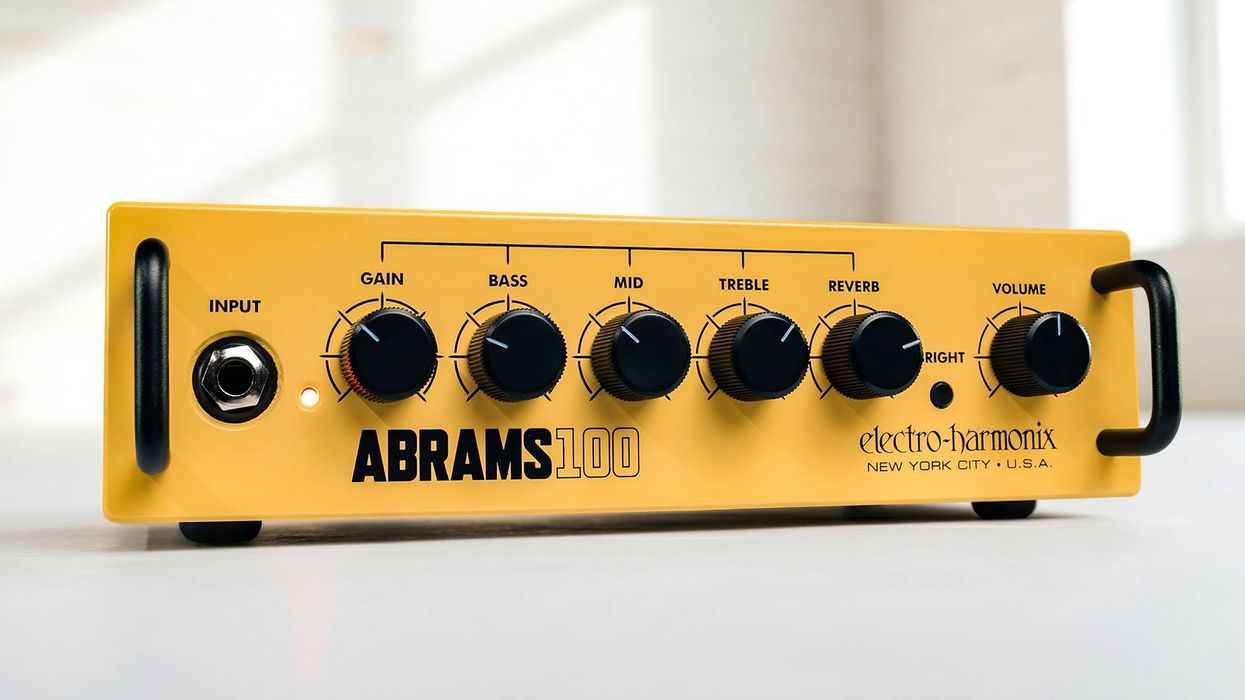

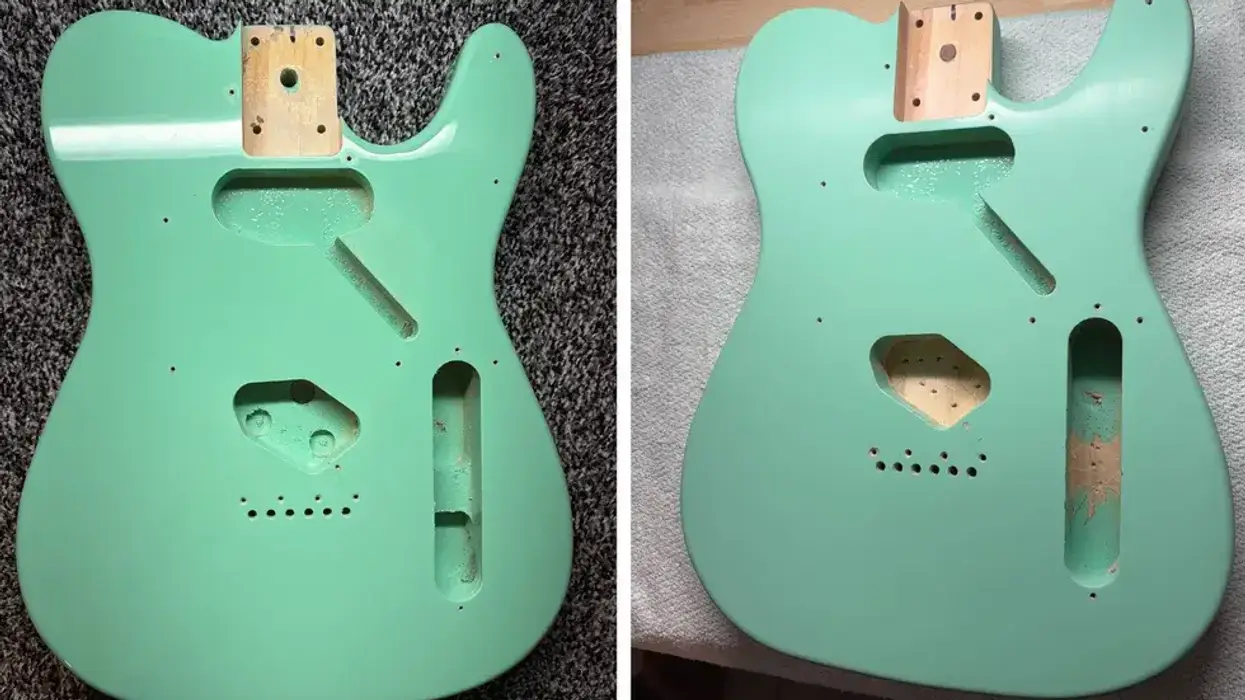
![Rig Rundown: AFI [2025]](https://www.premierguitar.com/media-library/youtube.jpg?id=62064741&width=1245&height=700&quality=70&coordinates=0%2C0%2C0%2C0)
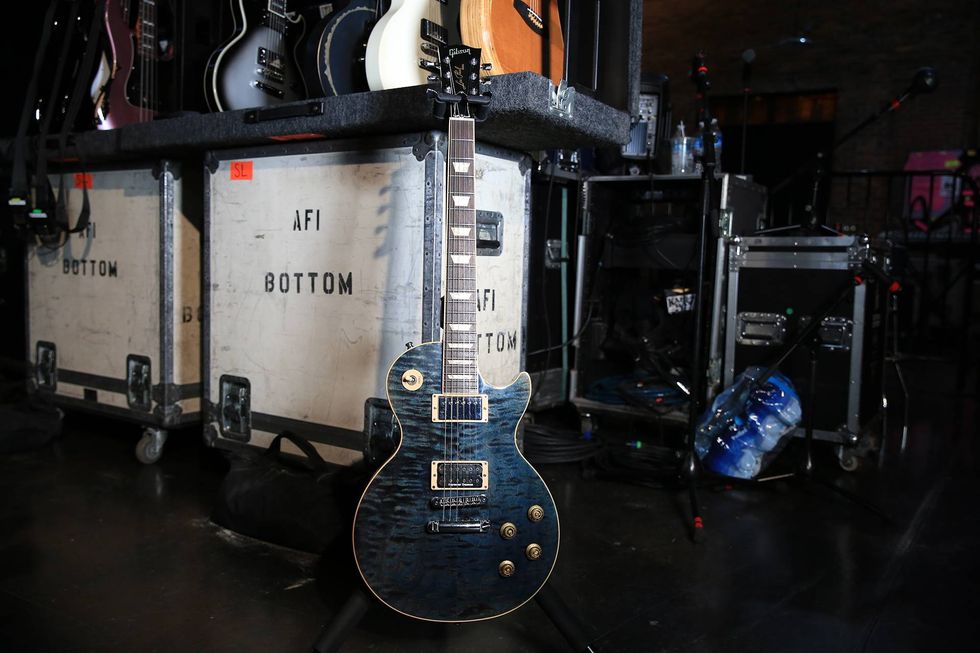
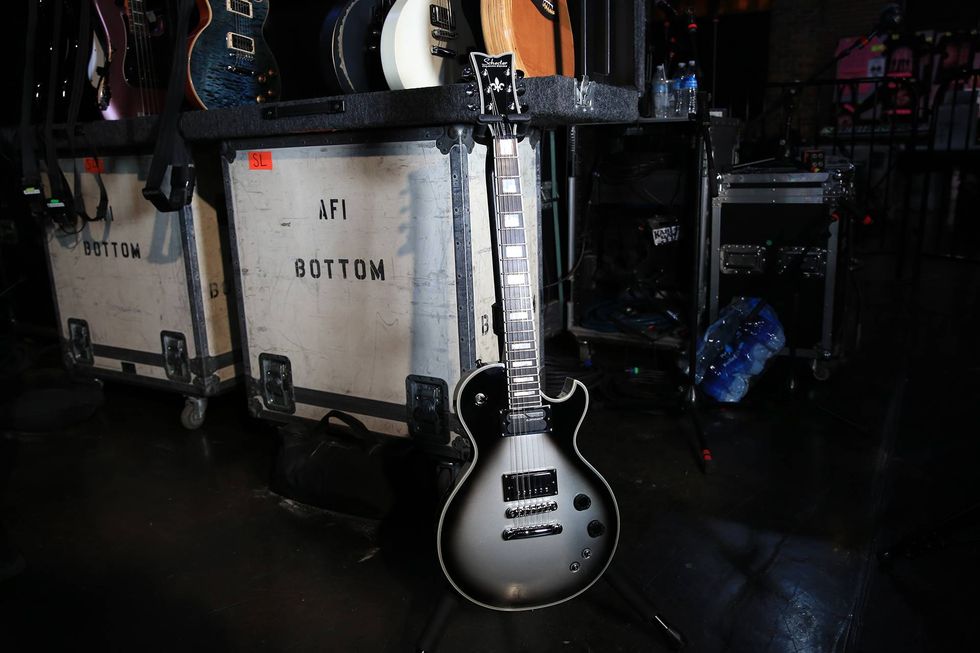
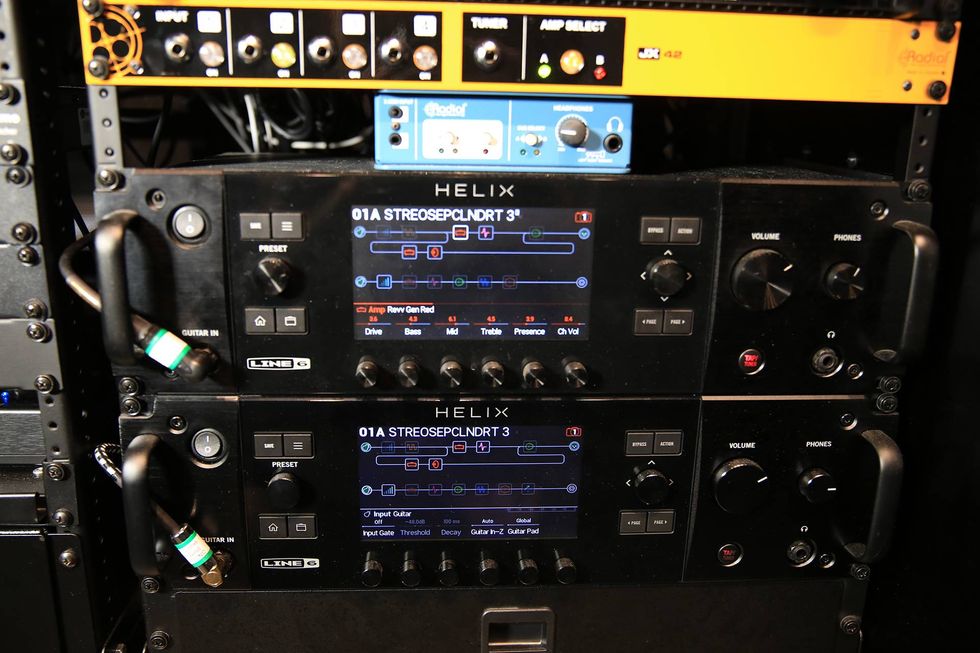
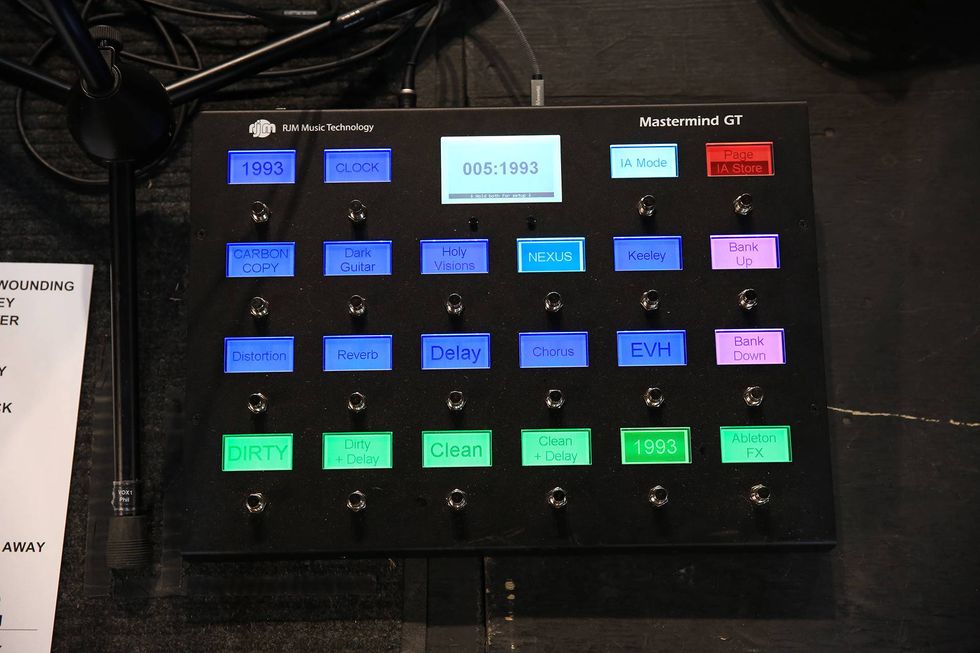
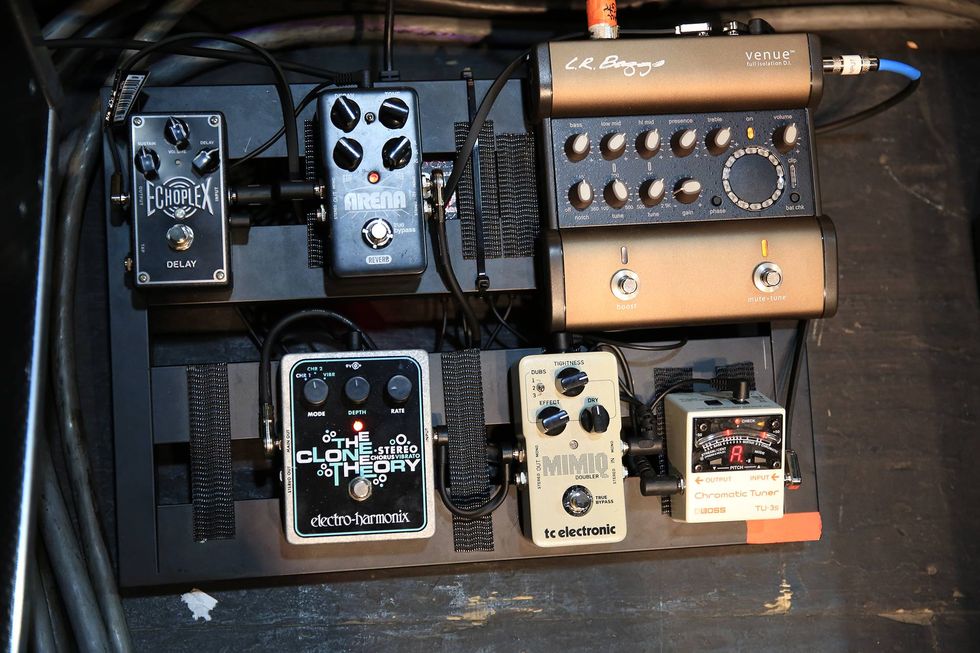
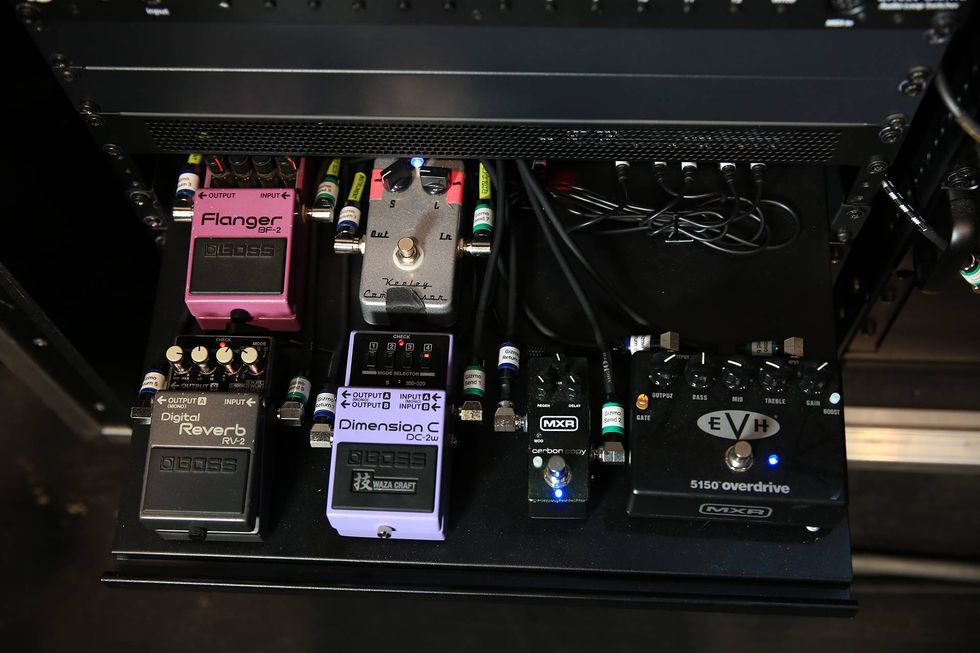
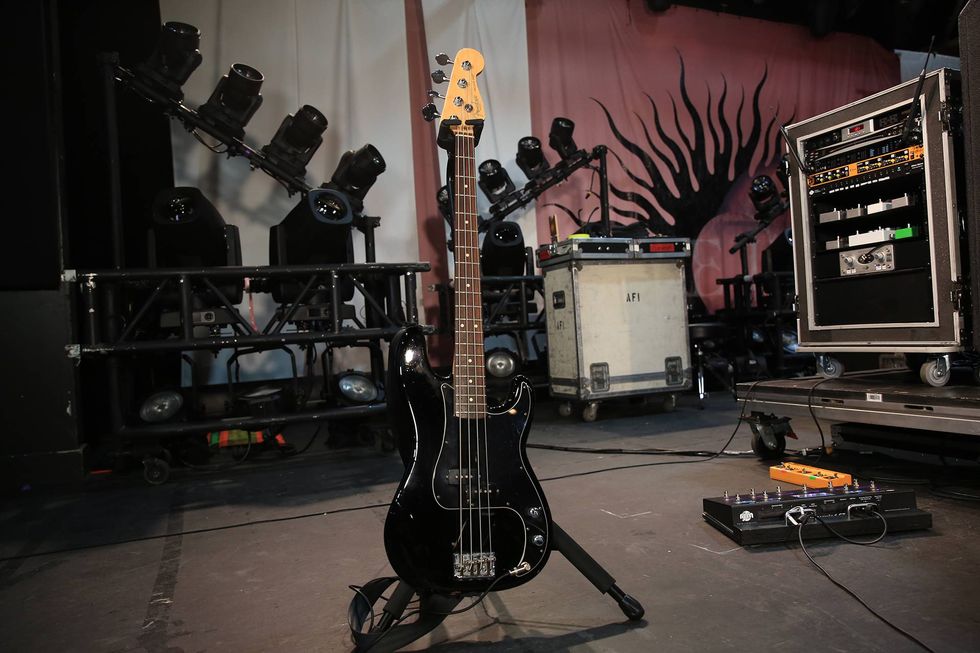
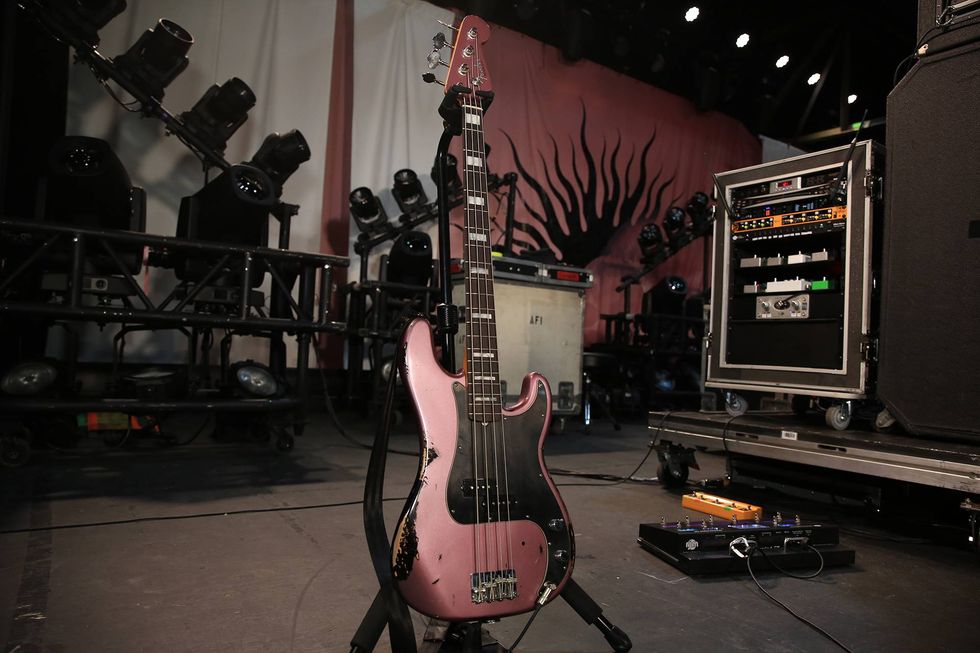
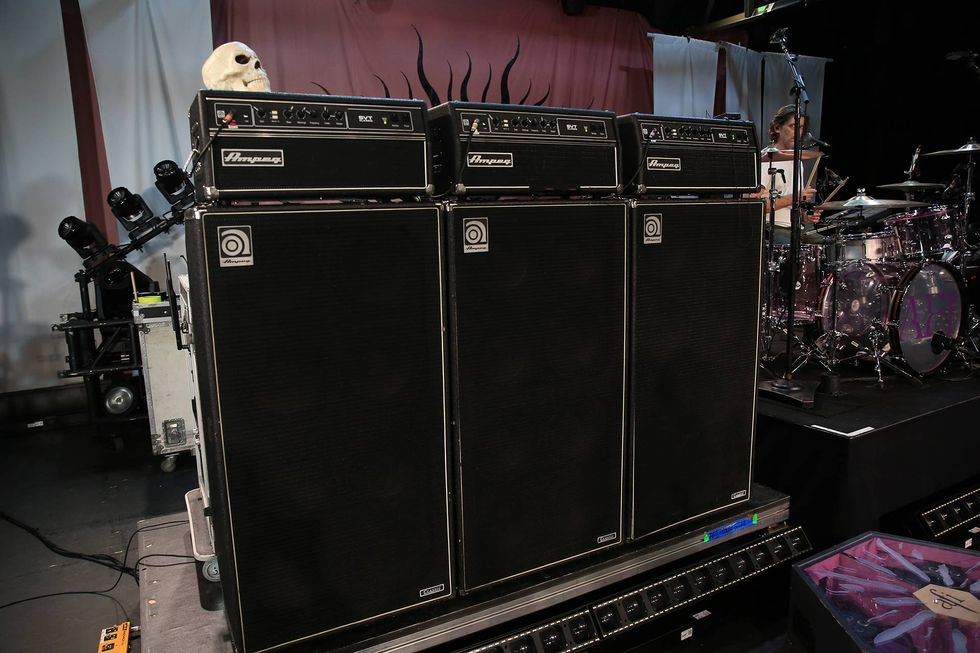
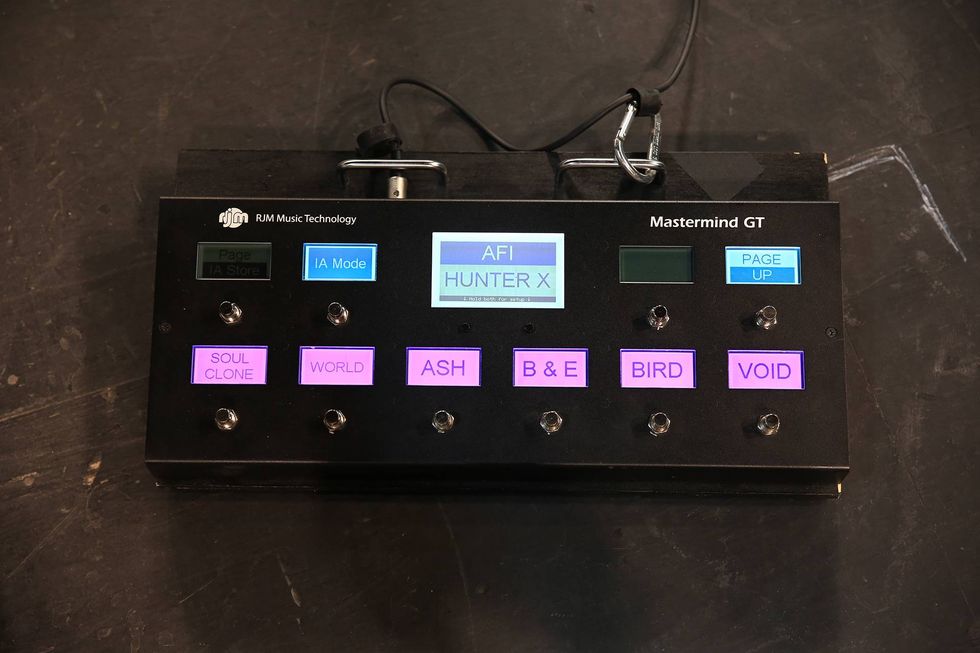
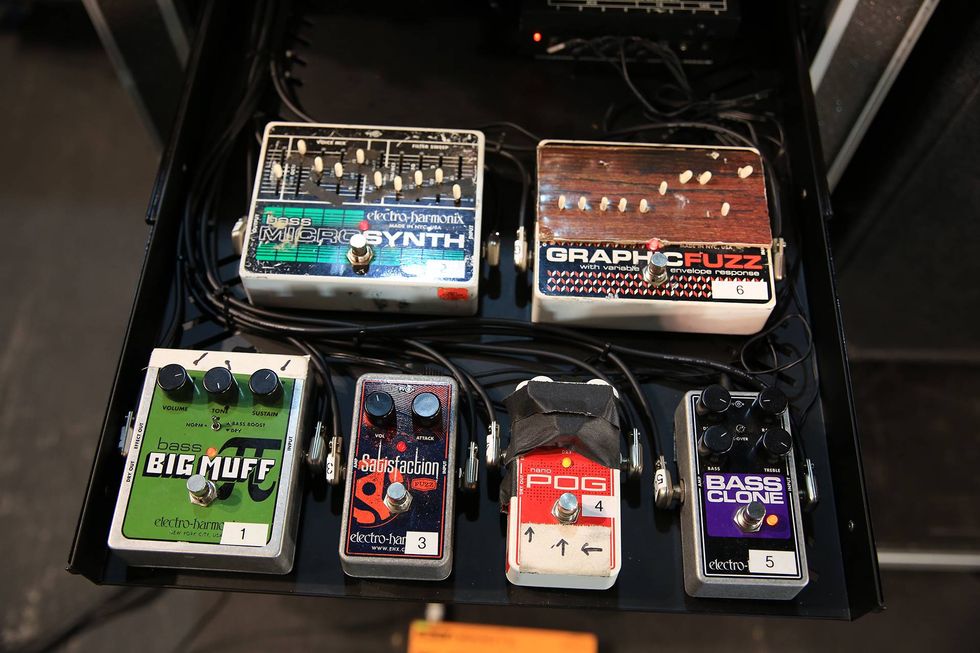
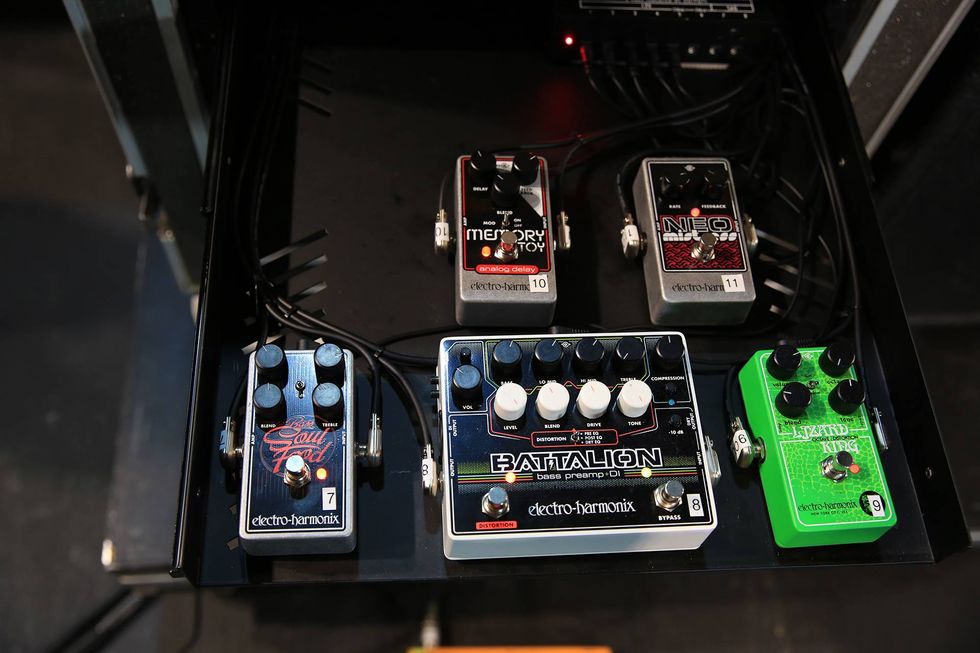
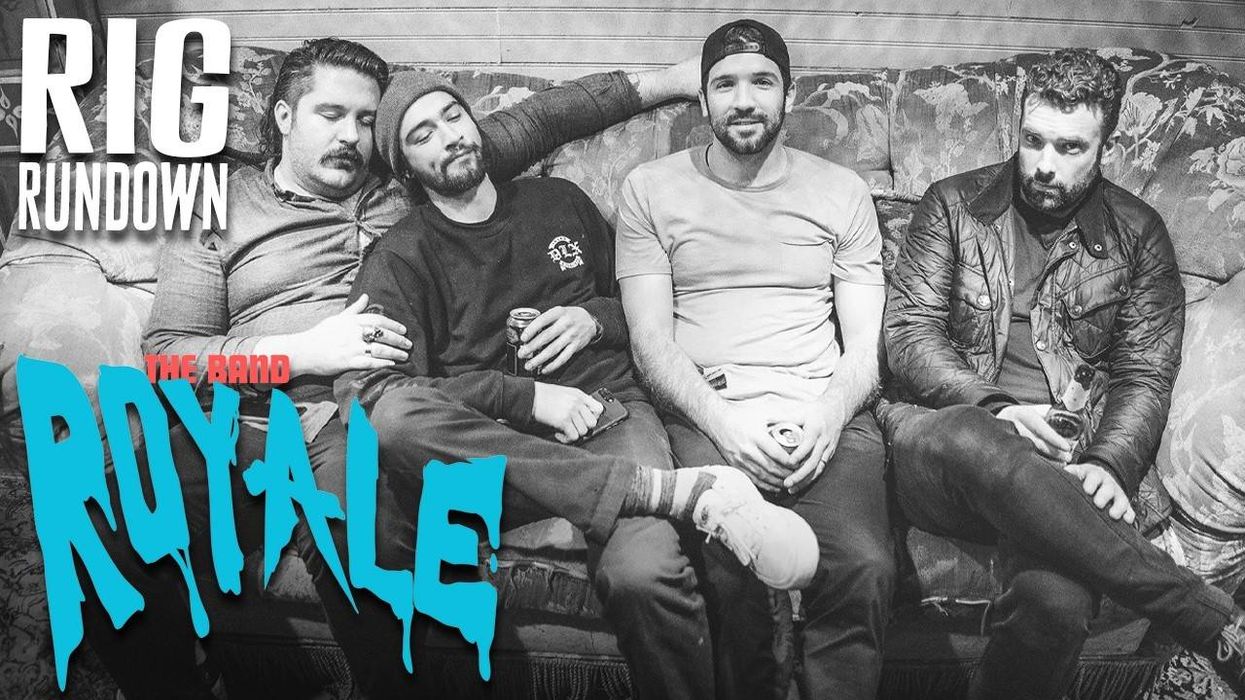
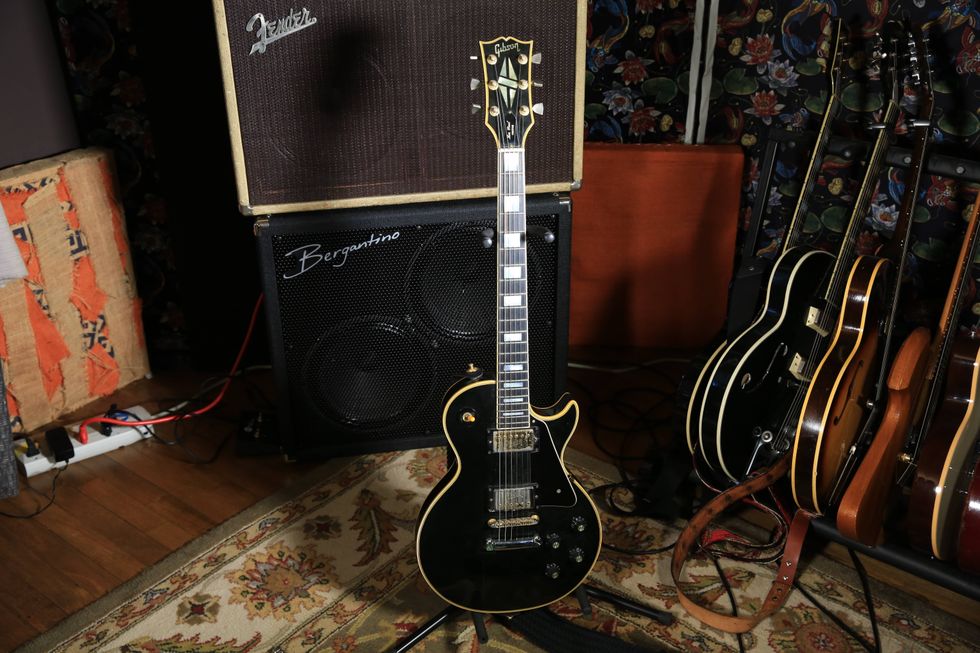
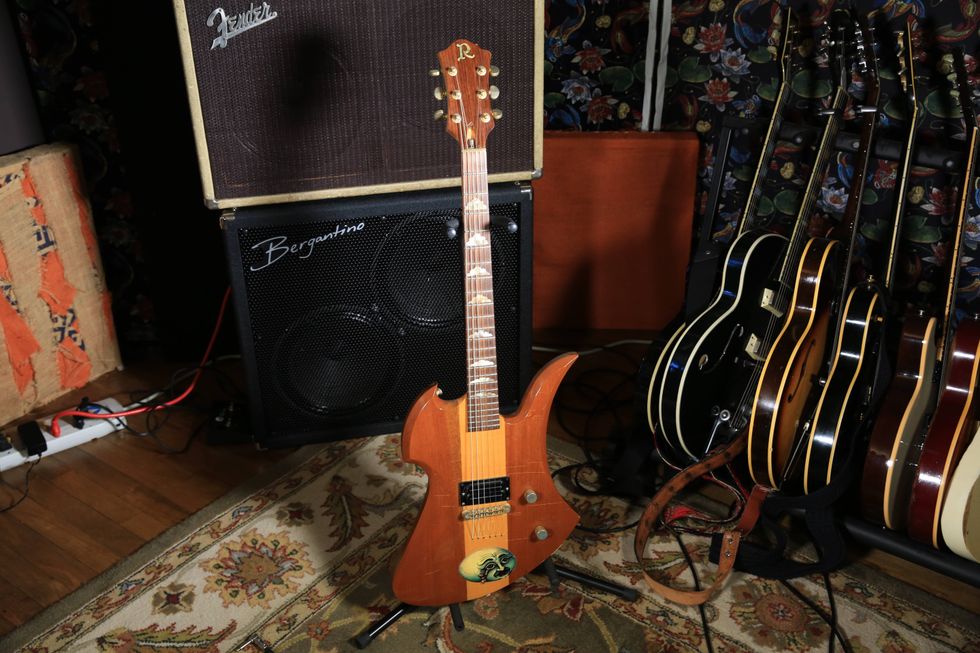
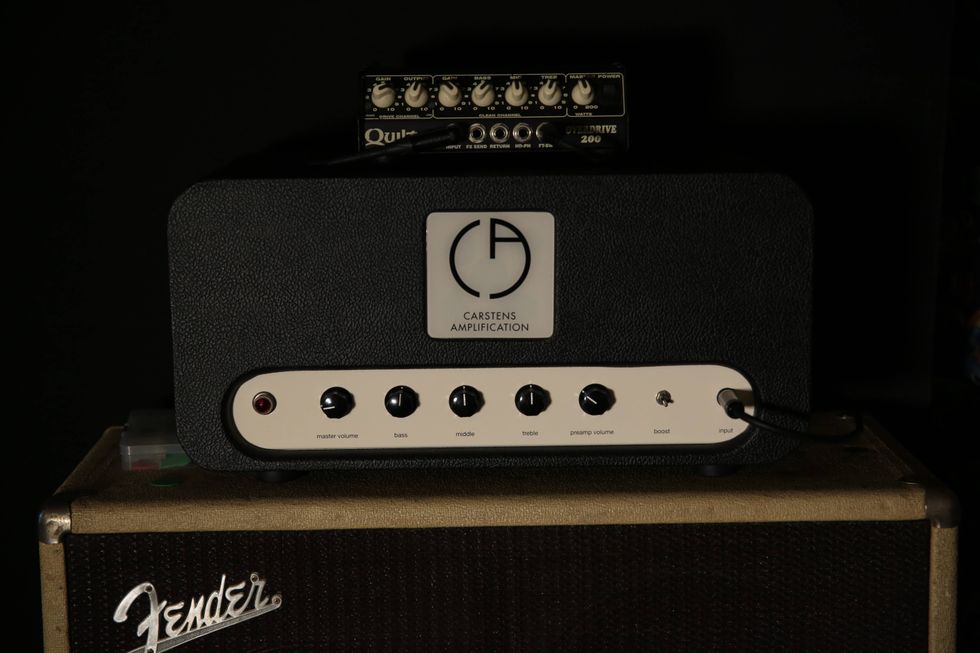
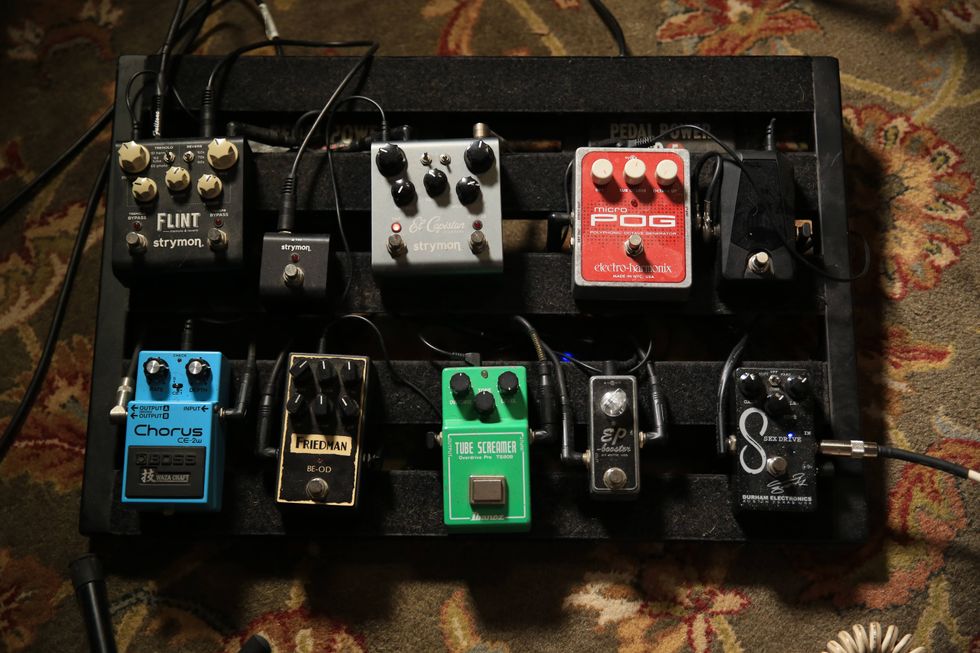
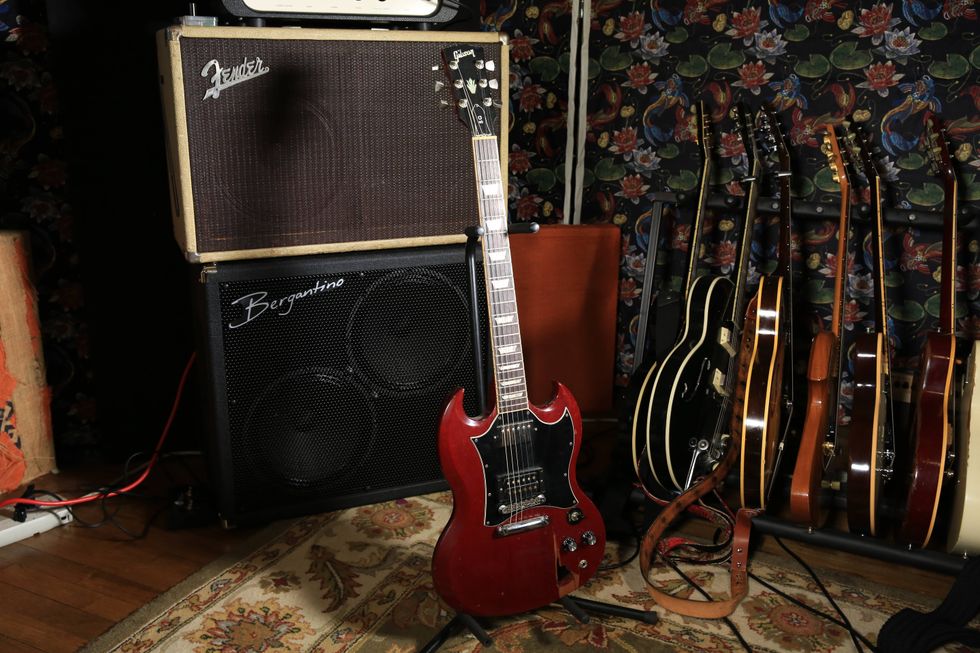
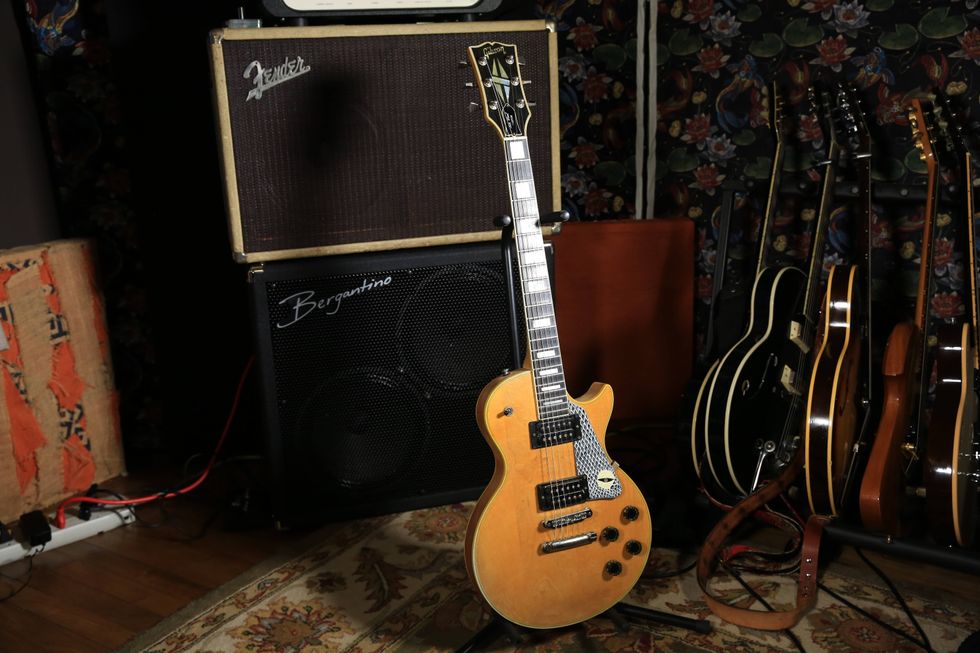
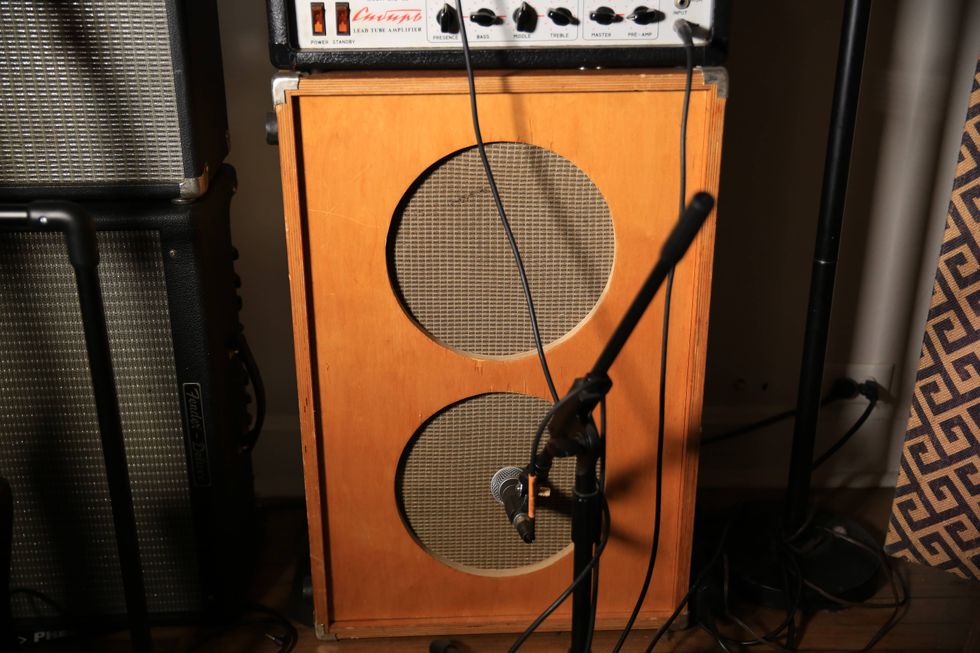
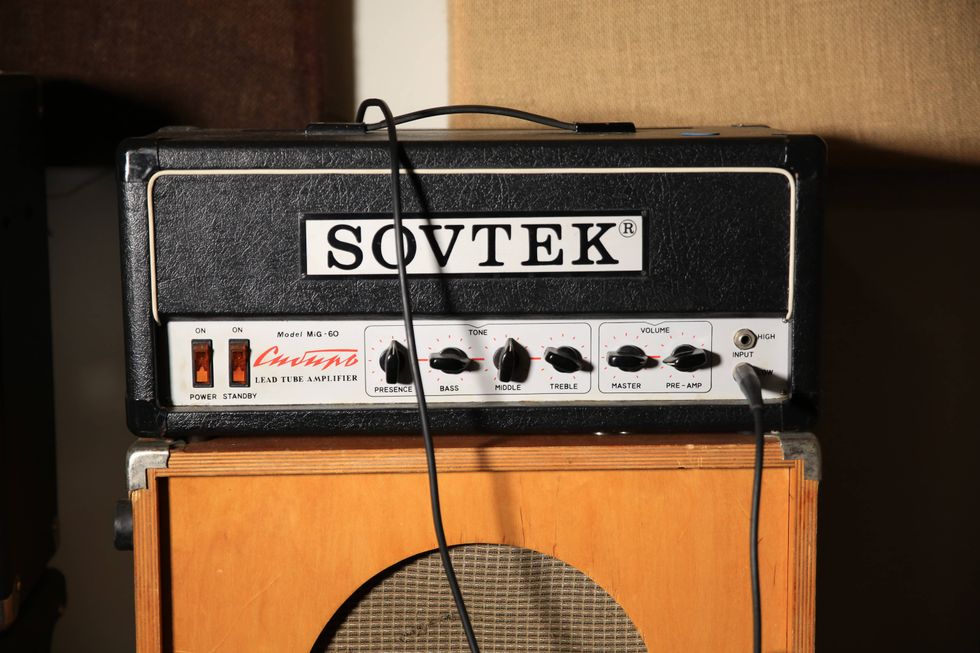 Zach loves his Sovtek Mig 60 head, which he plays through a cab he built himself at a pipe-organ shop in Denver. Every glue joint is lined with thin leather for maximum air tightness, and it’s stocked with Celestion G12M Greenback speakers.
Zach loves his Sovtek Mig 60 head, which he plays through a cab he built himself at a pipe-organ shop in Denver. Every glue joint is lined with thin leather for maximum air tightness, and it’s stocked with Celestion G12M Greenback speakers.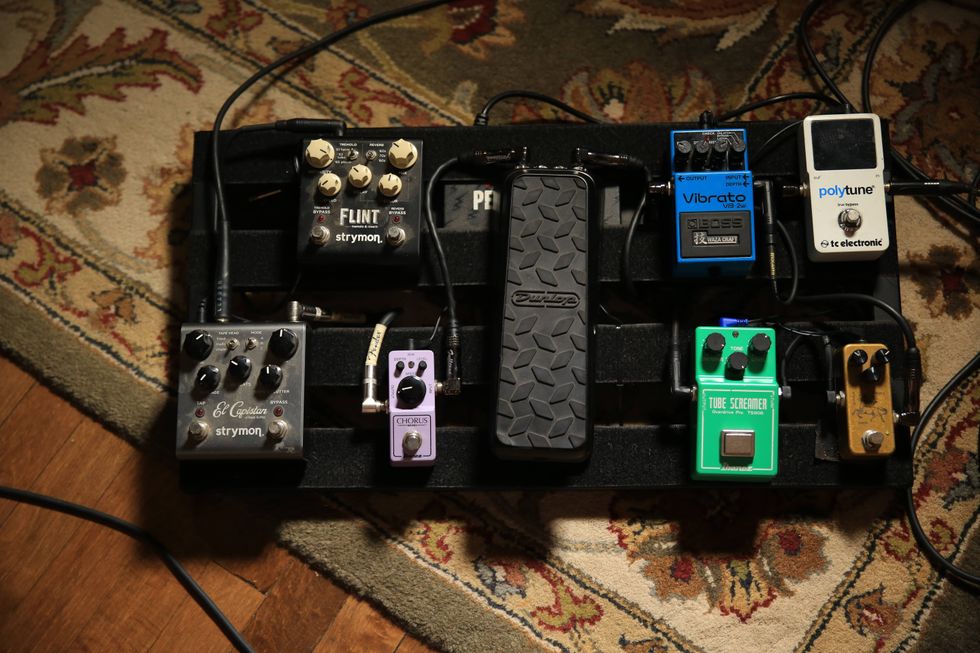
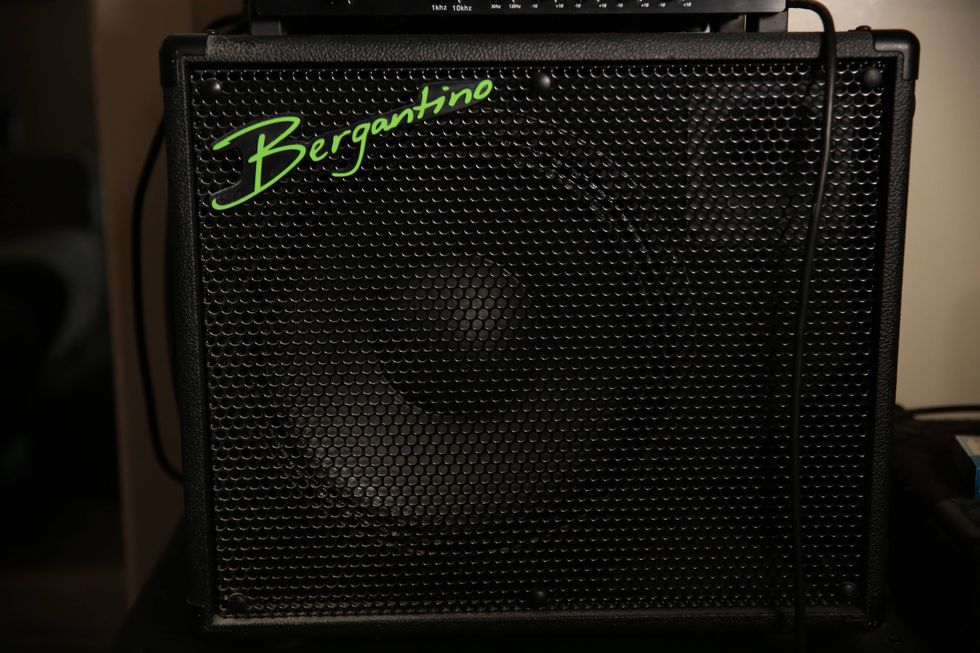
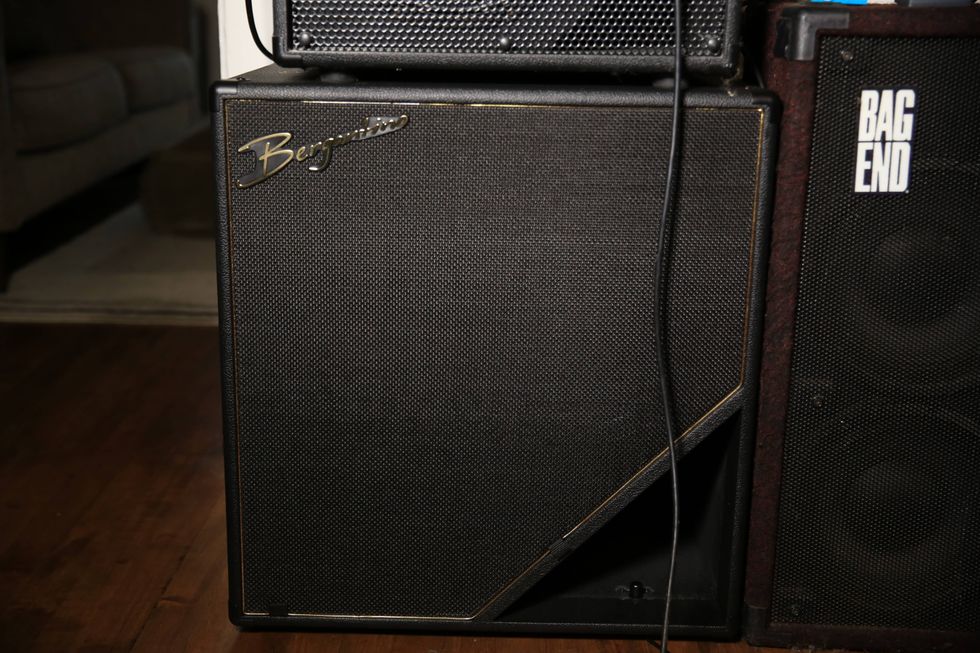
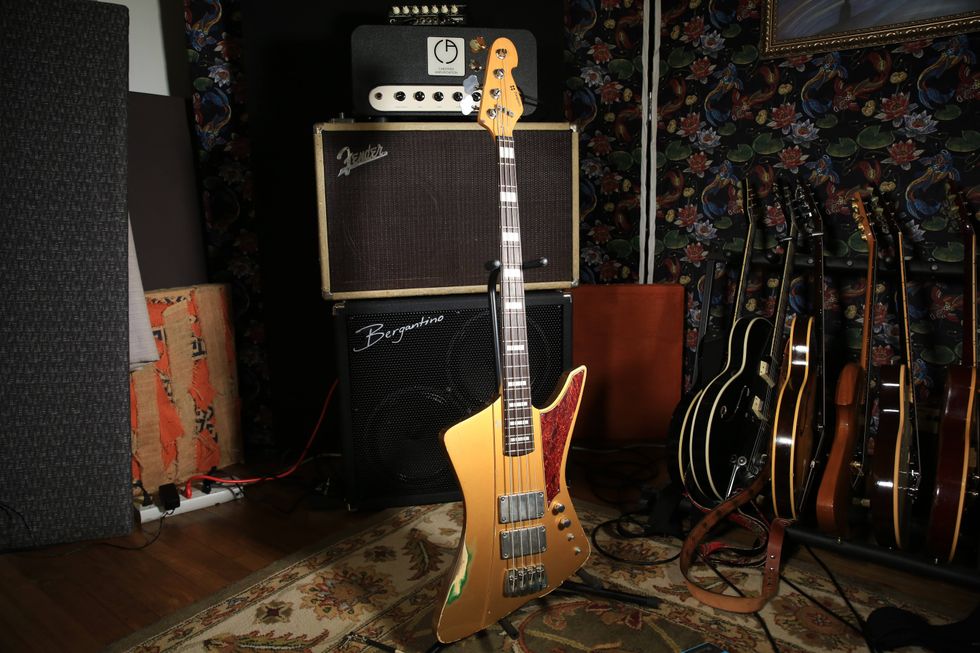
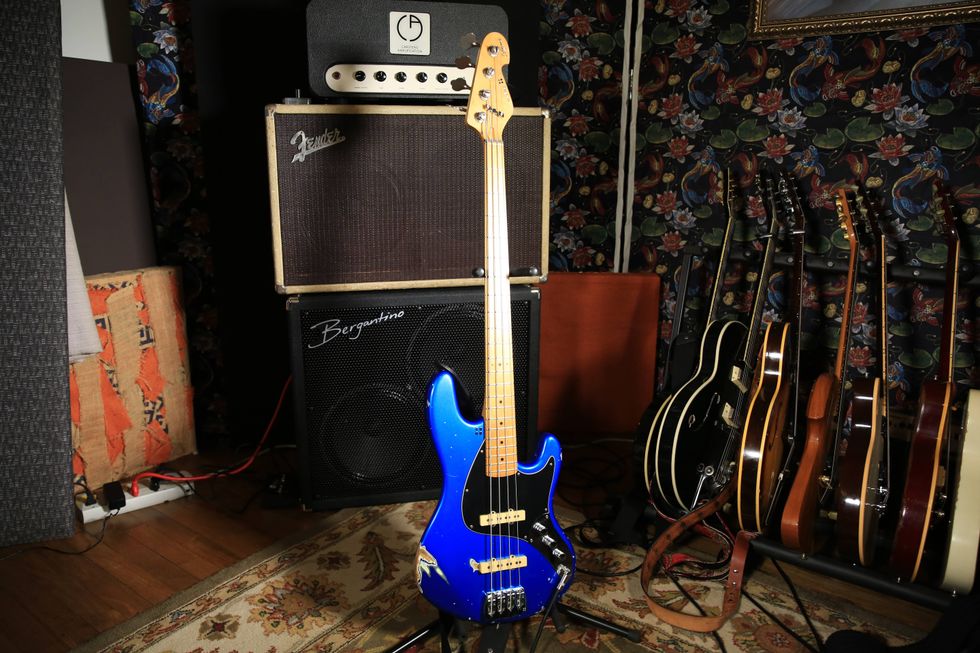
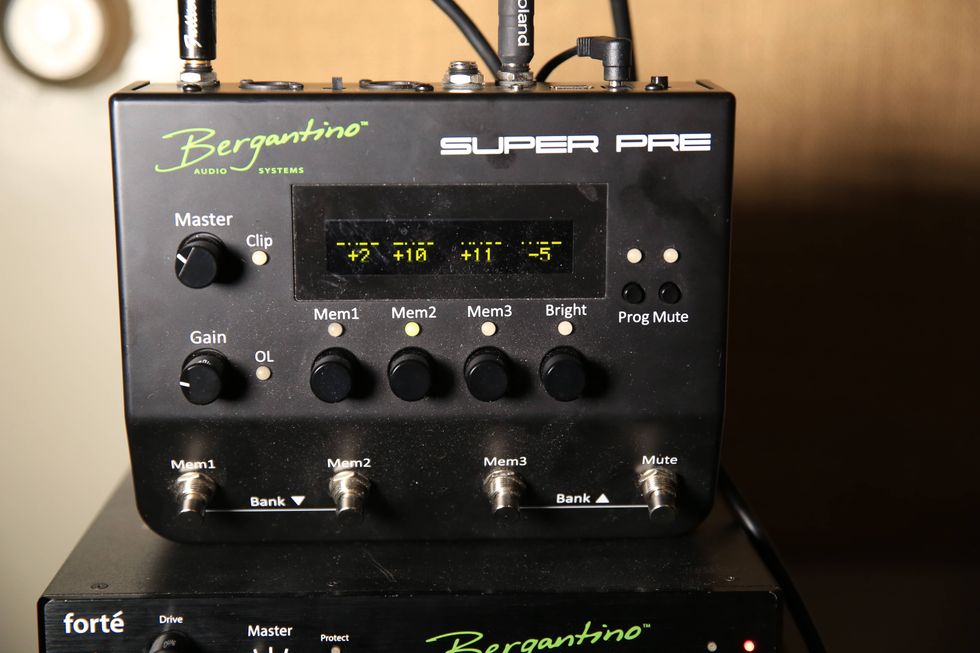
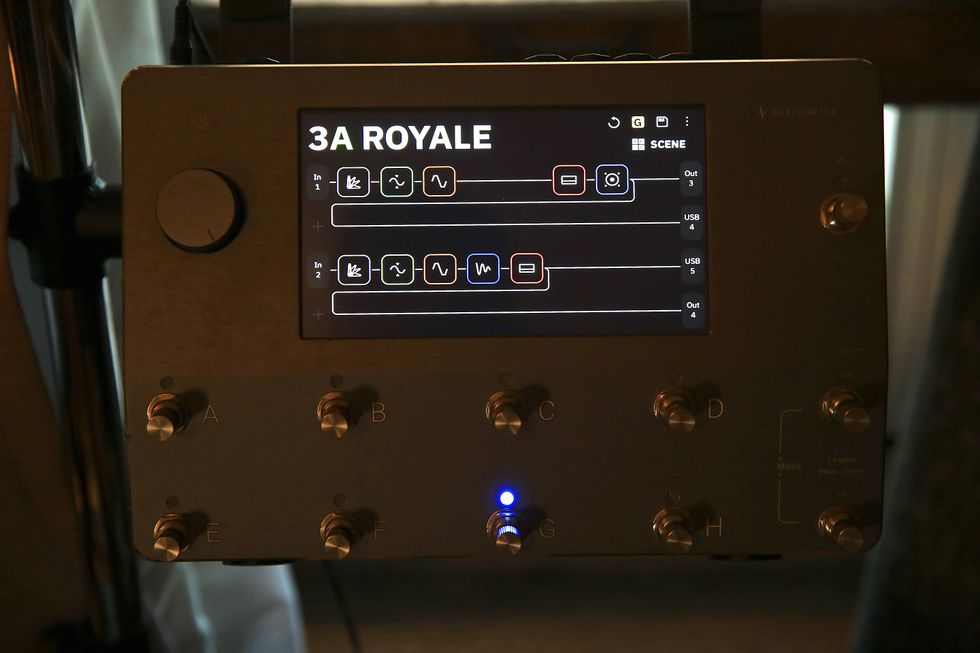

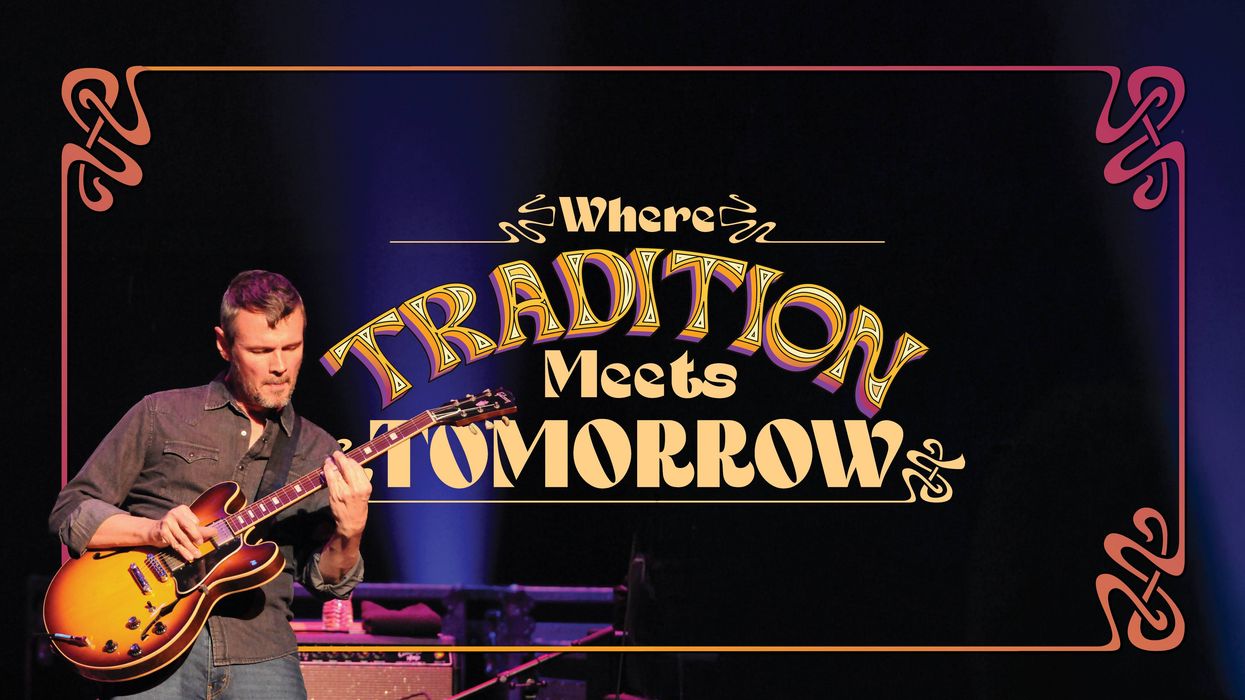
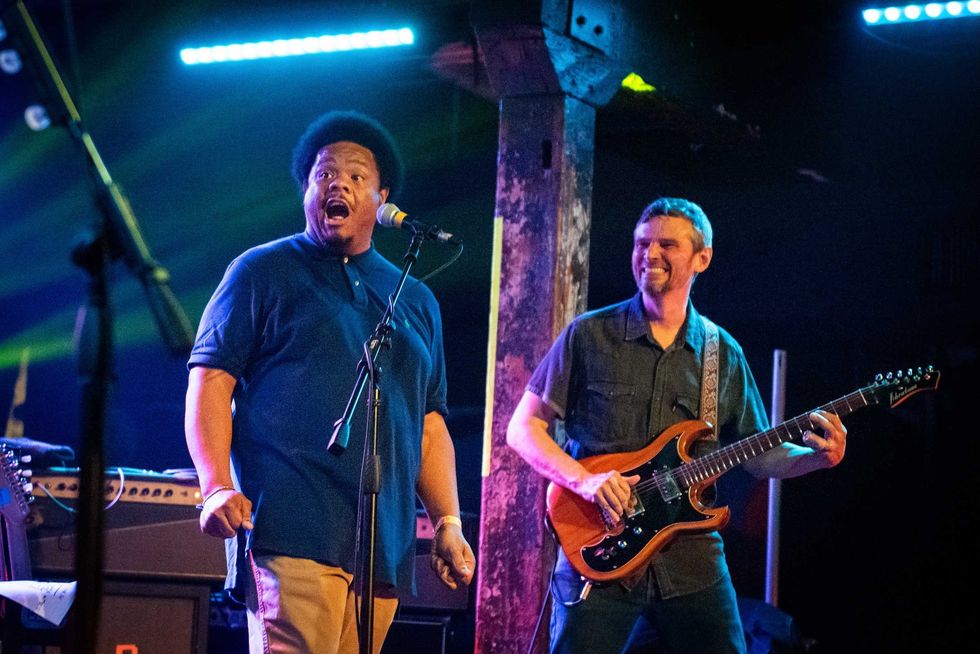
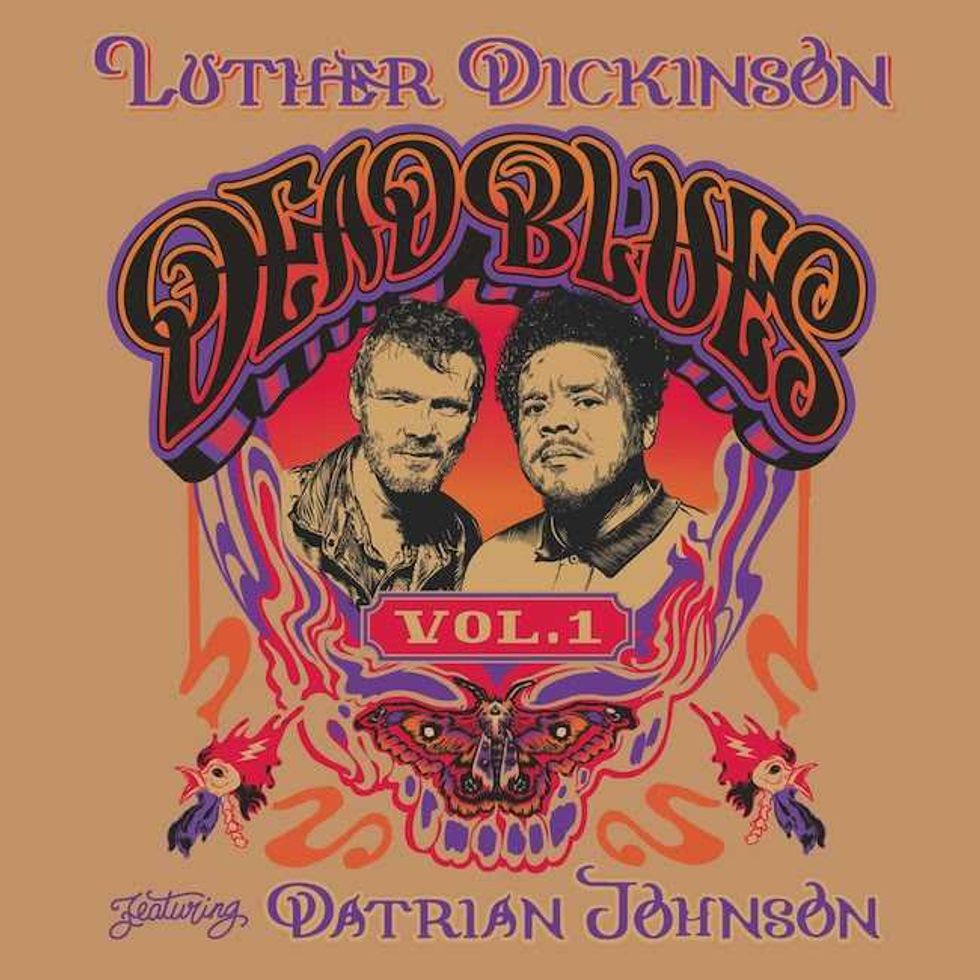
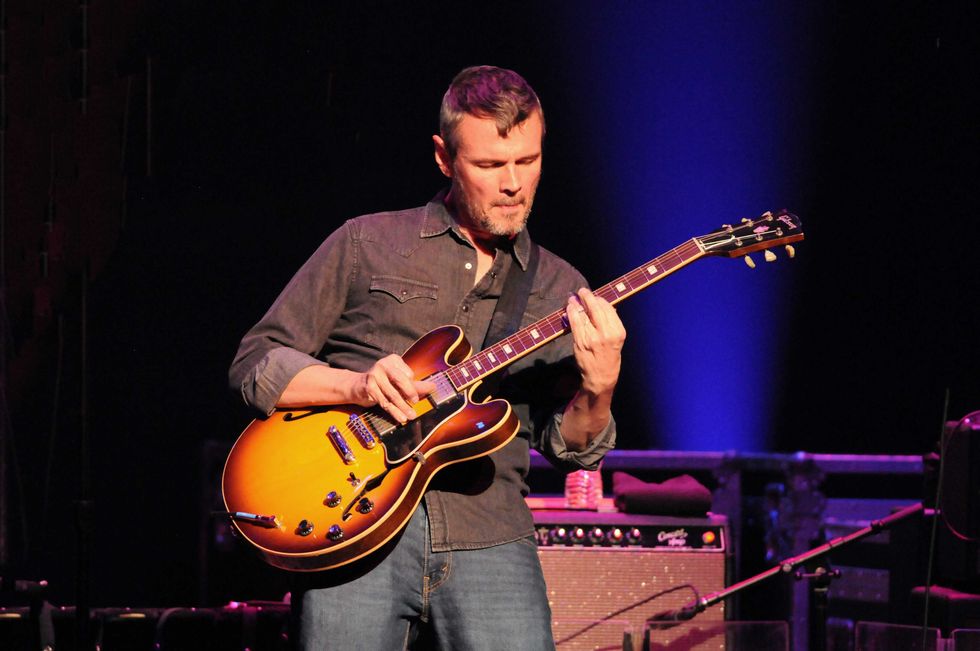
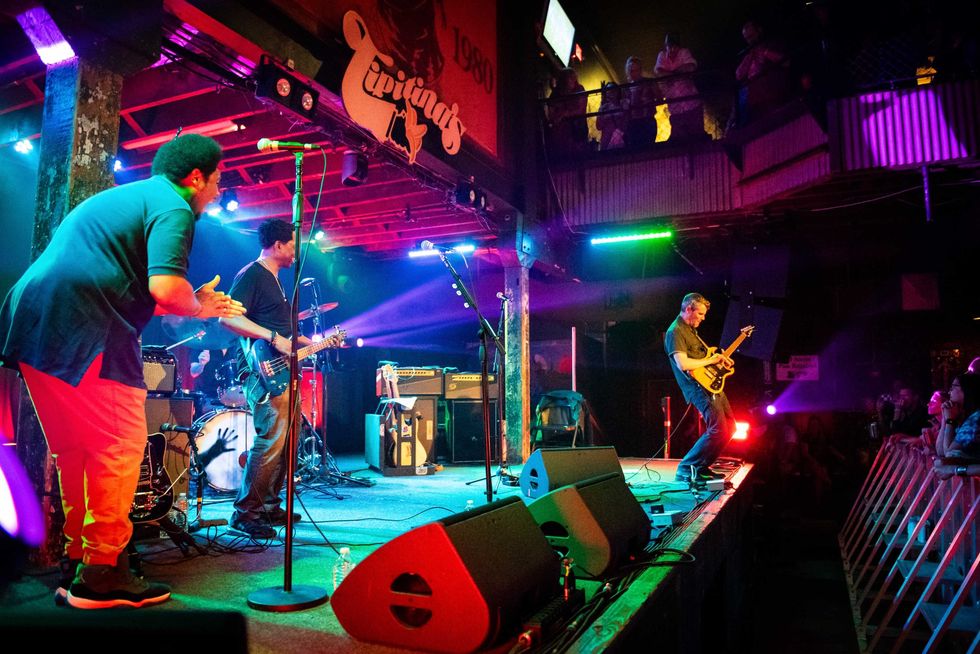
![Devon Eisenbarger [Katy Perry] Rig Rundown](https://www.premierguitar.com/media-library/youtube.jpg?id=61774583&width=1245&height=700&quality=70&coordinates=0%2C0%2C0%2C0)
